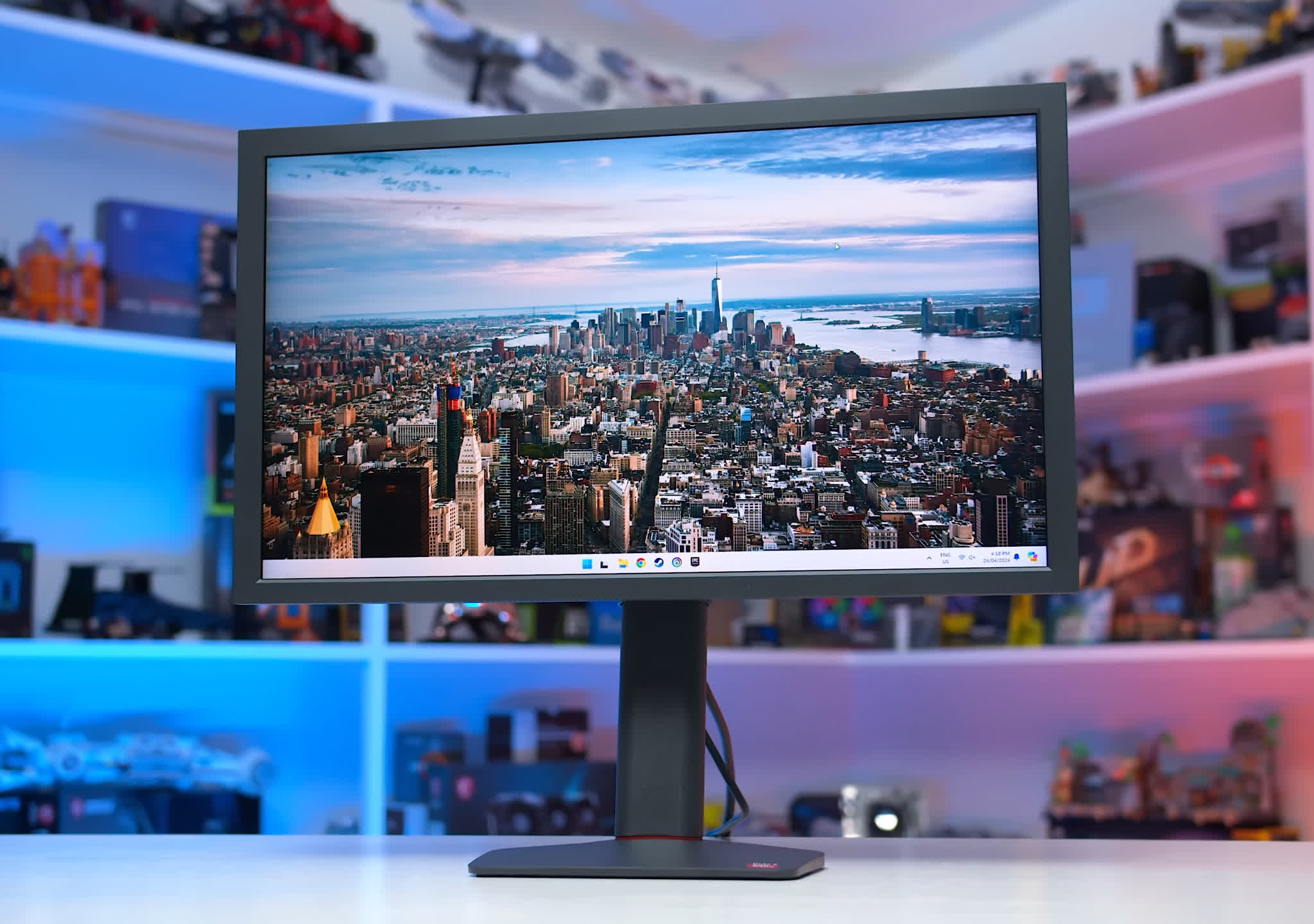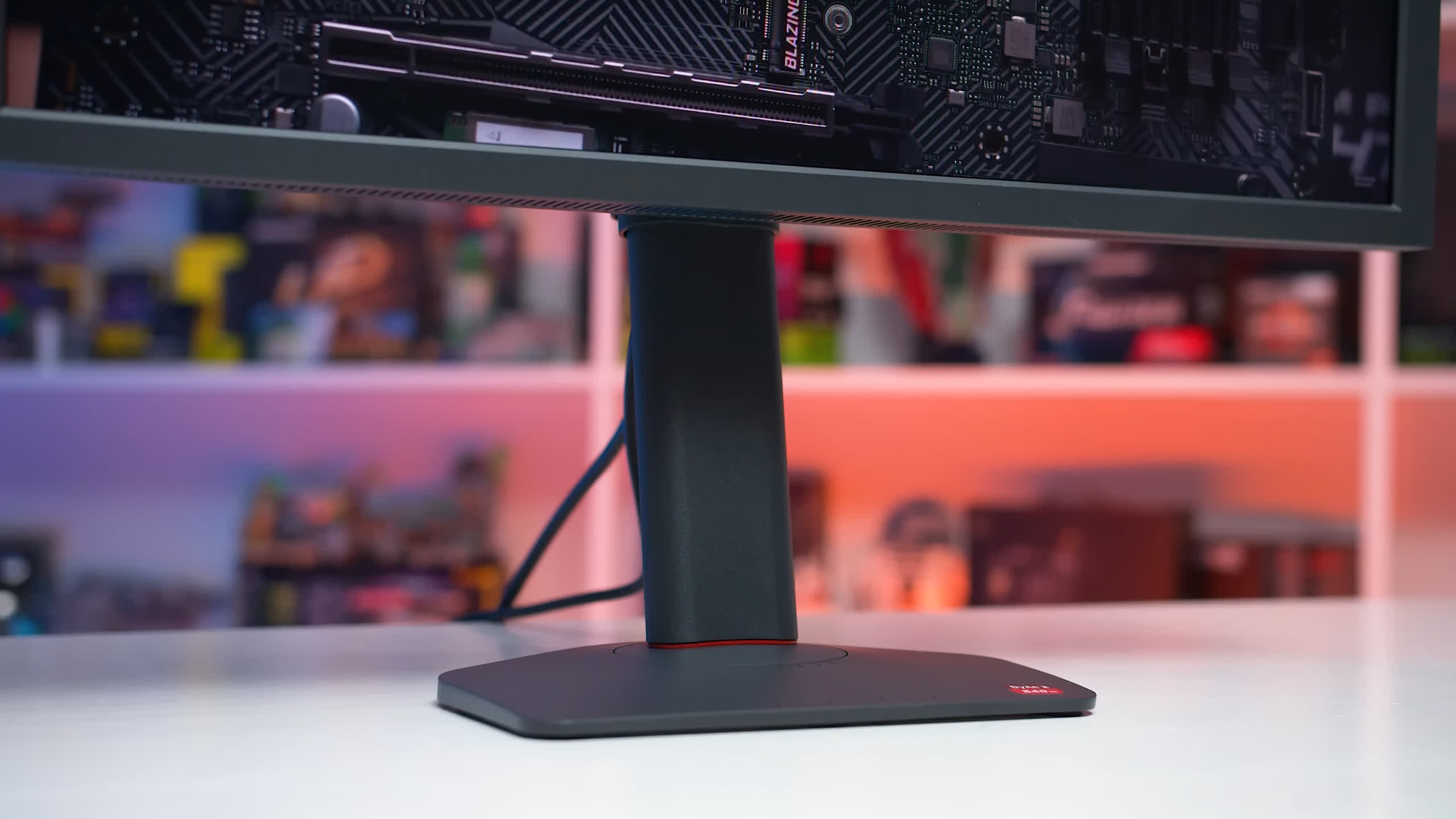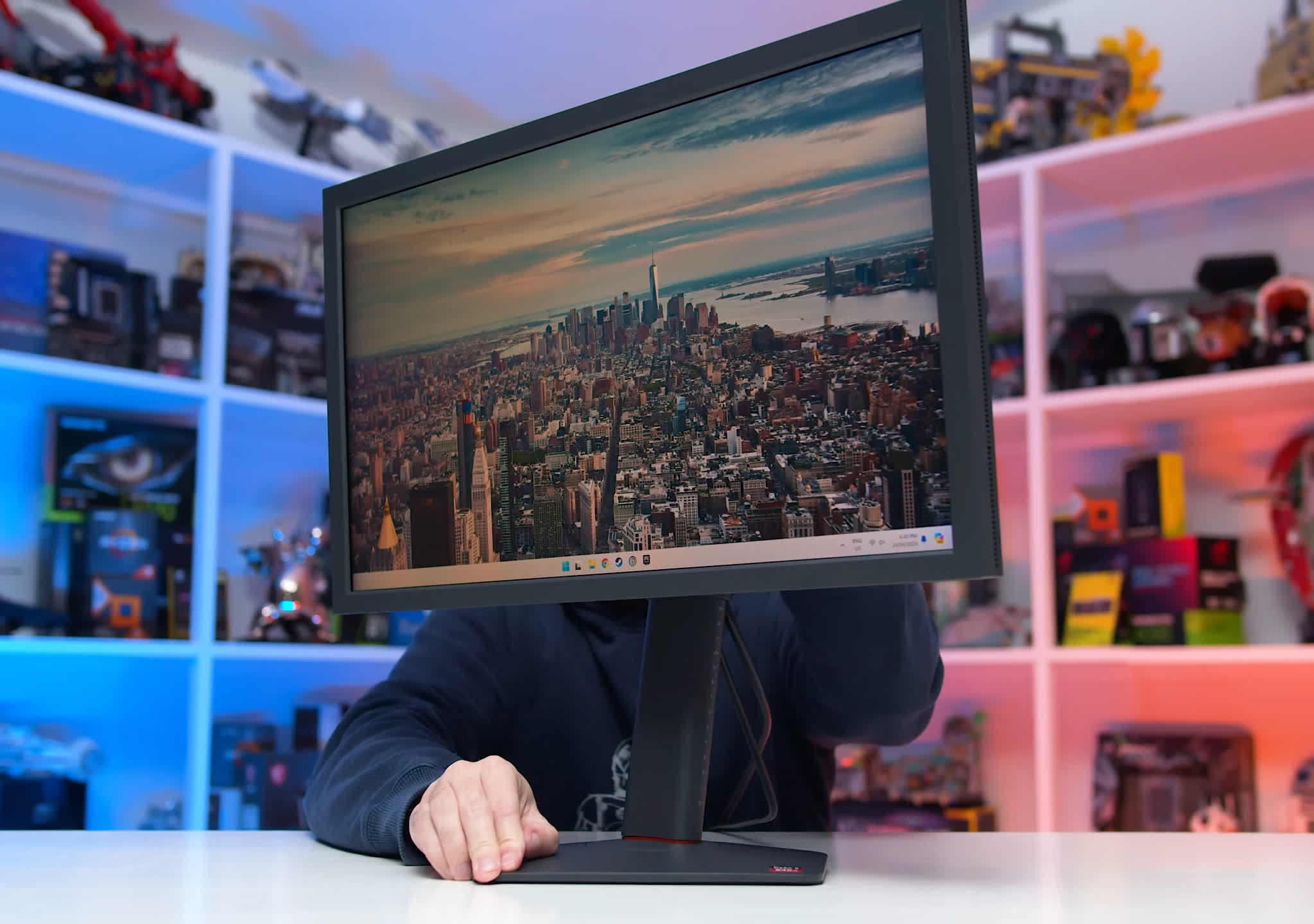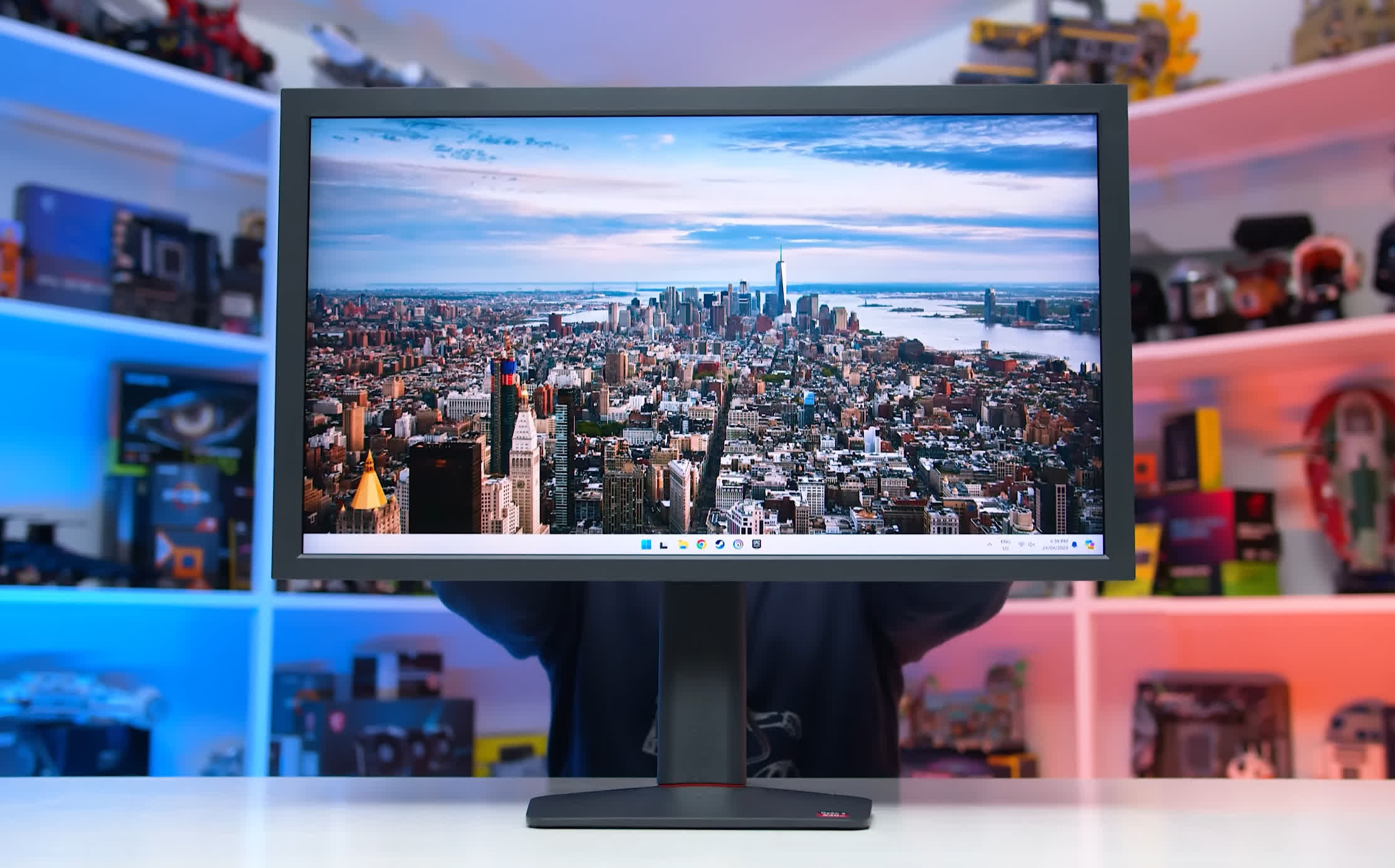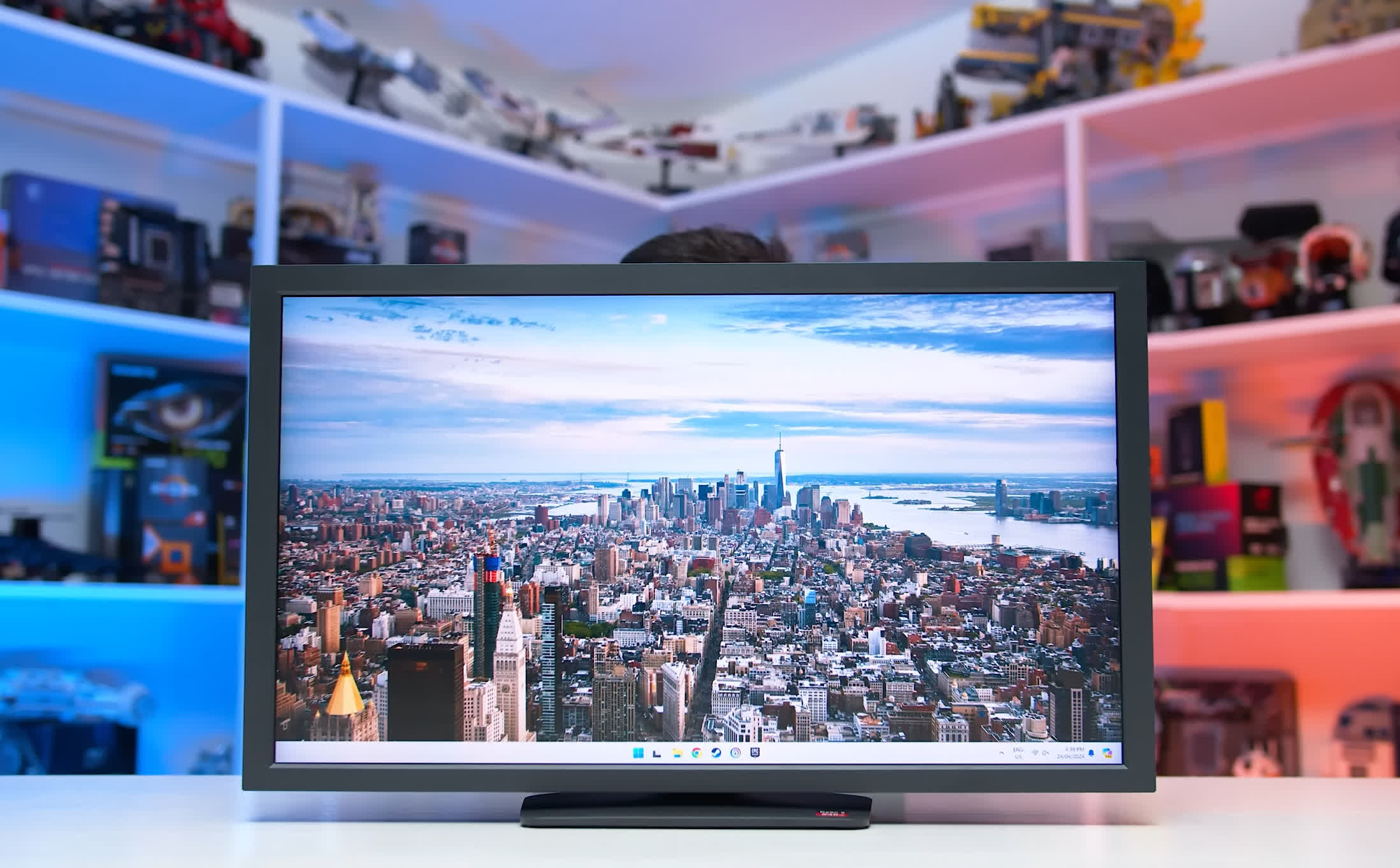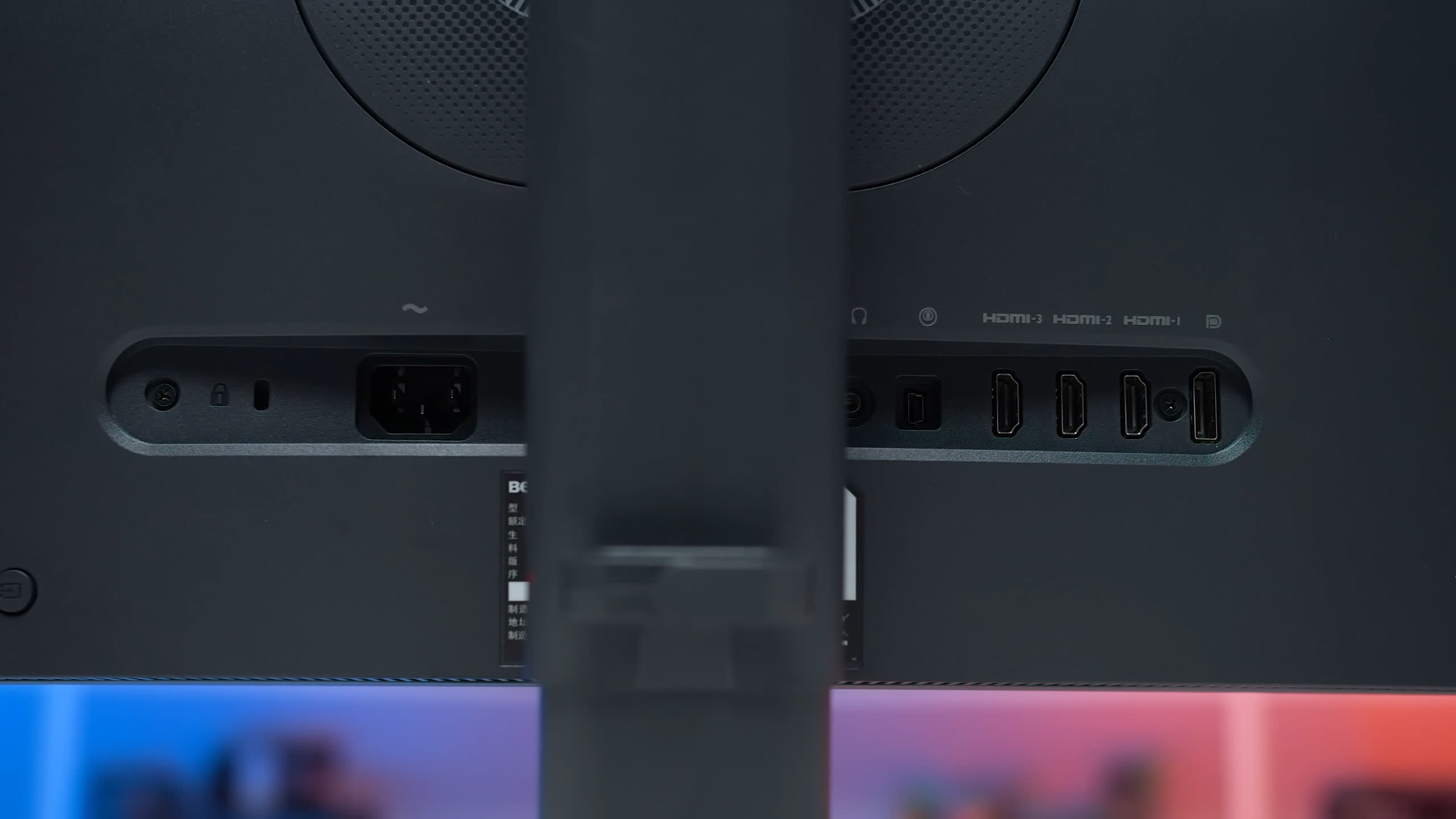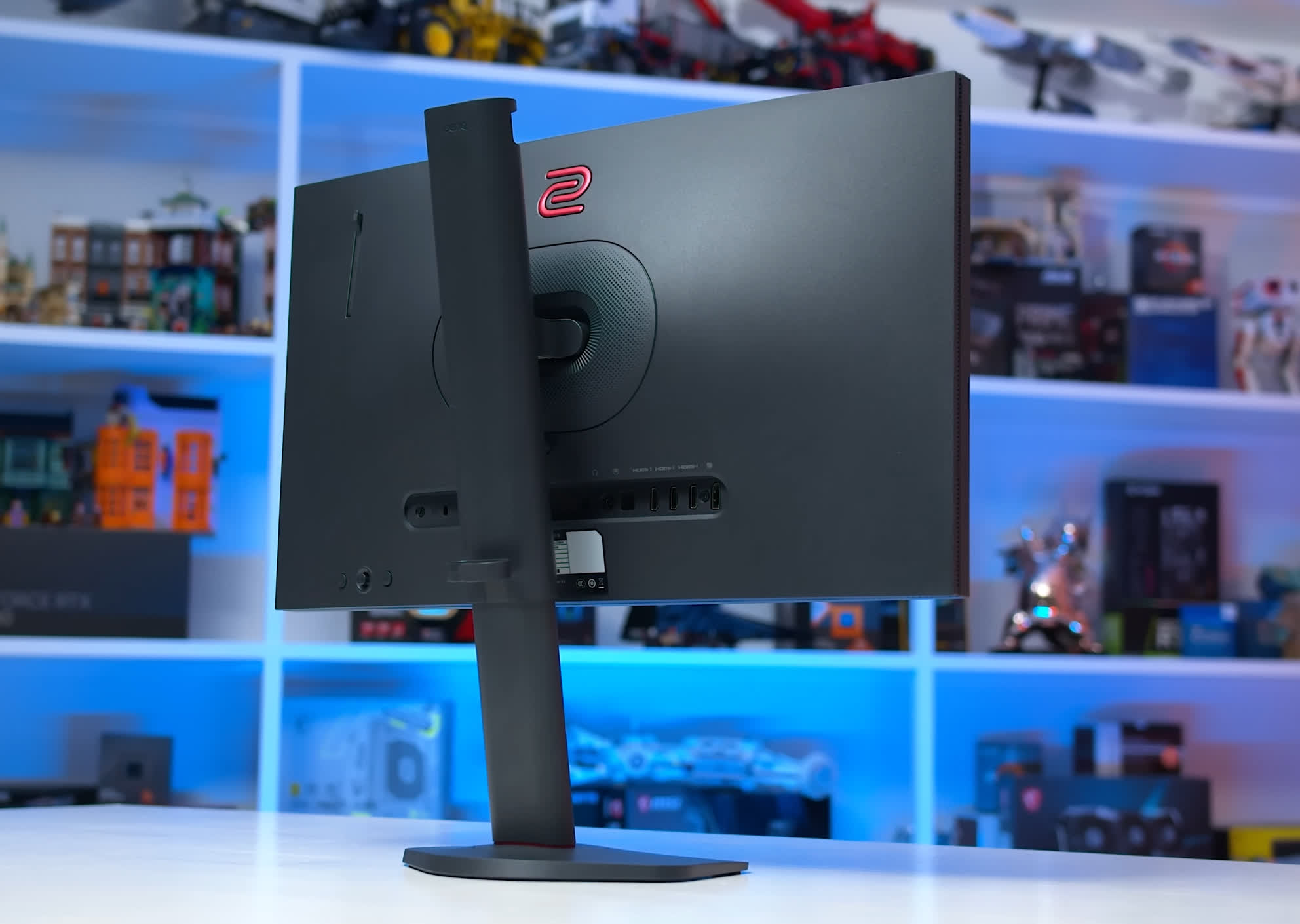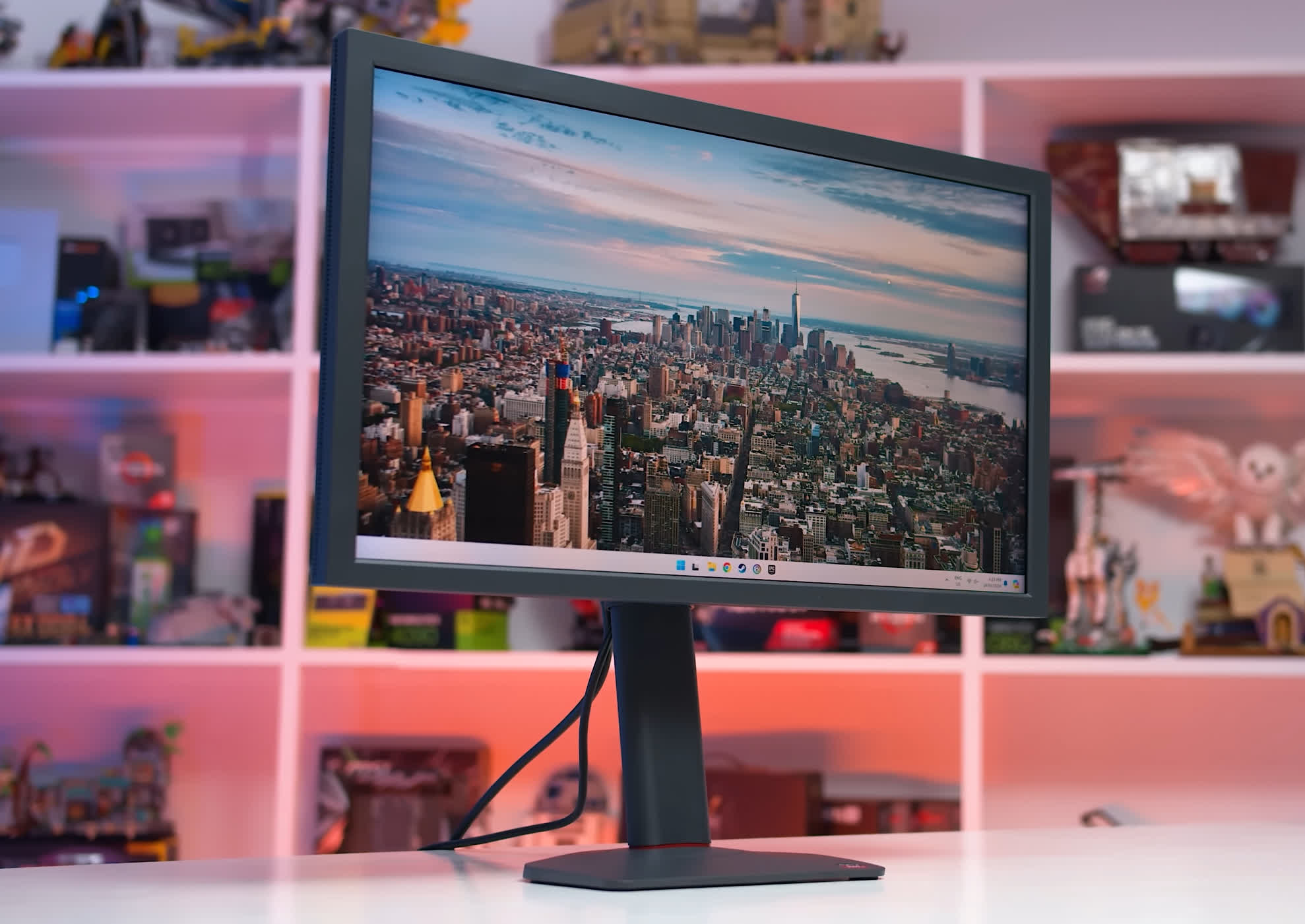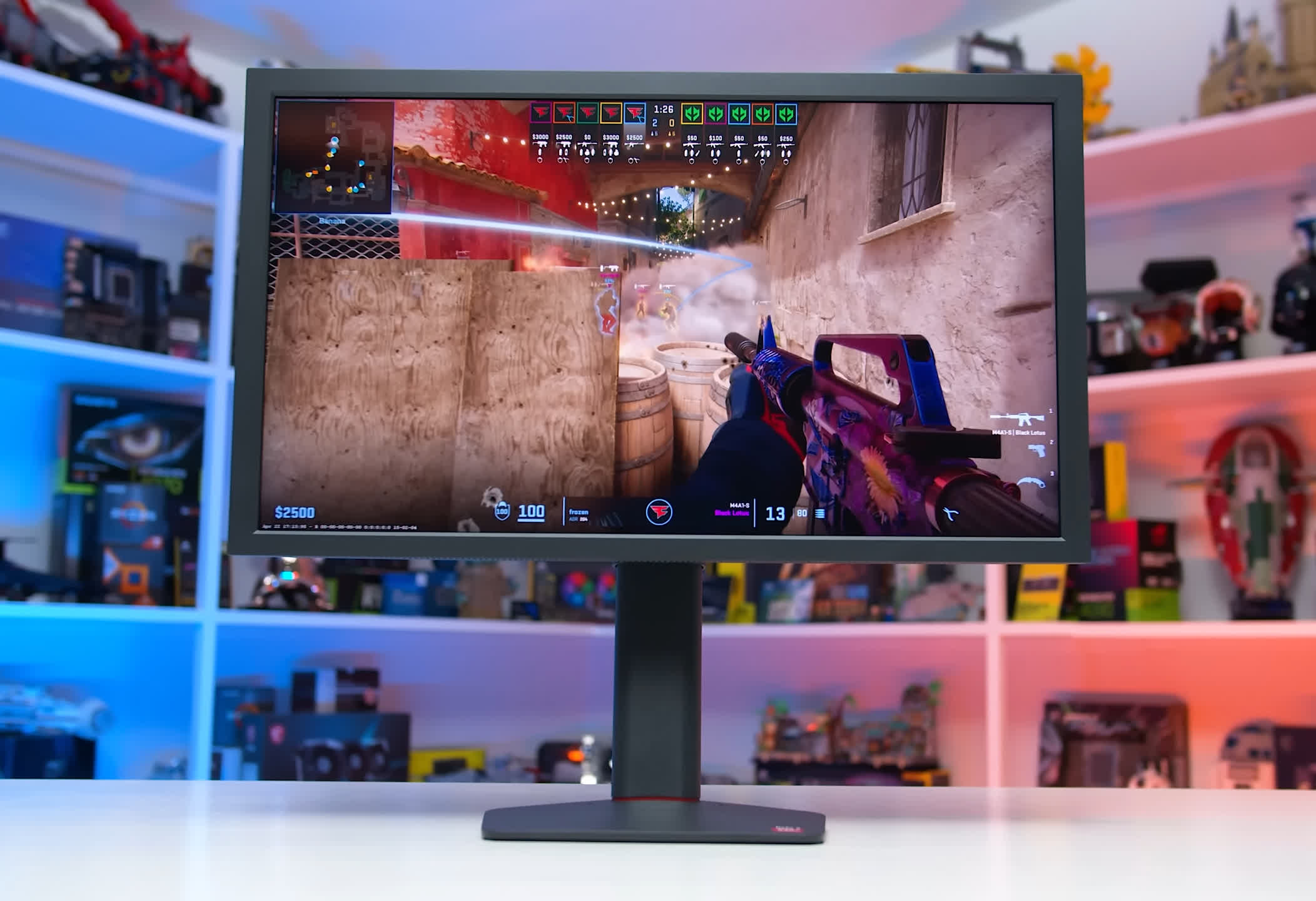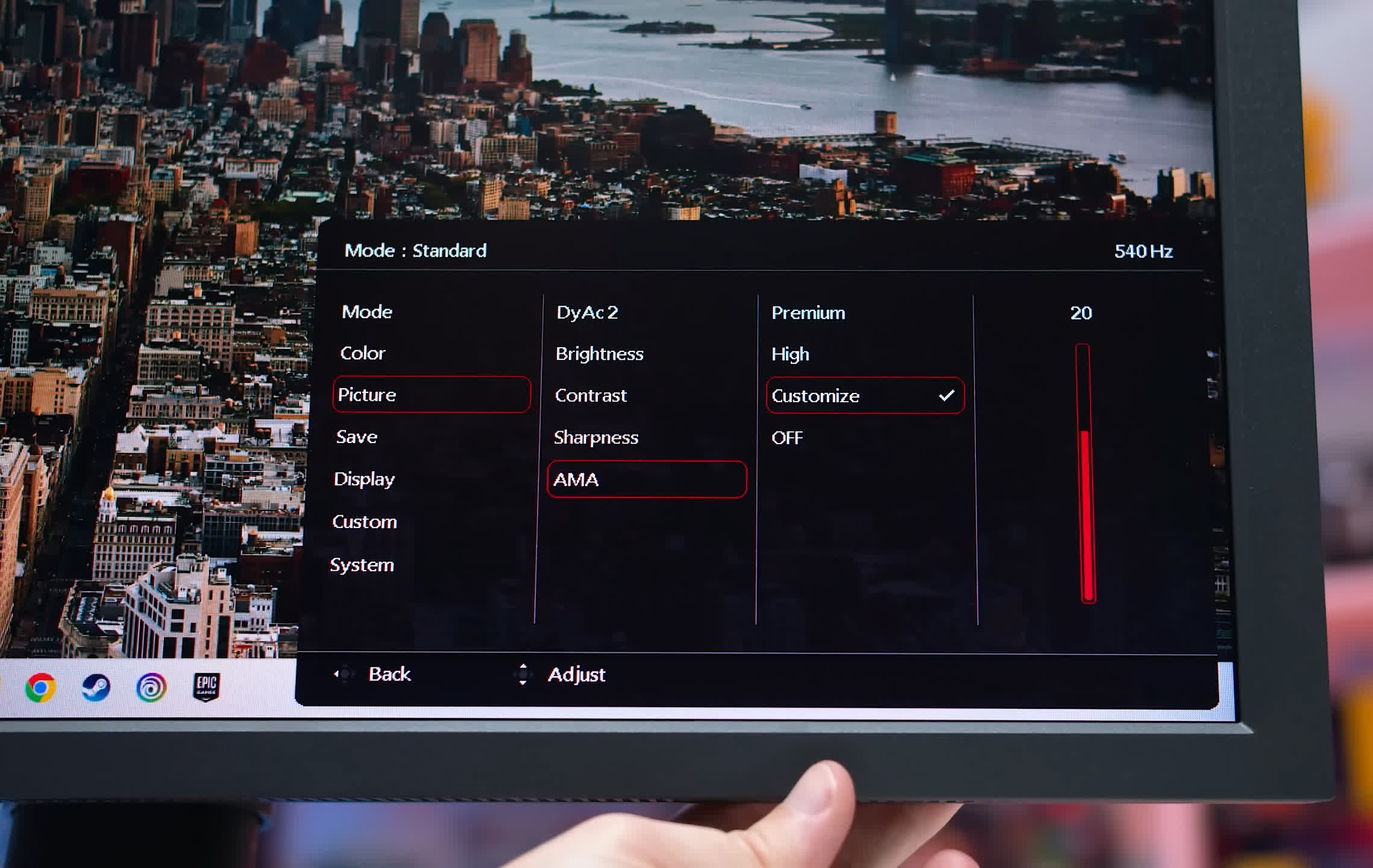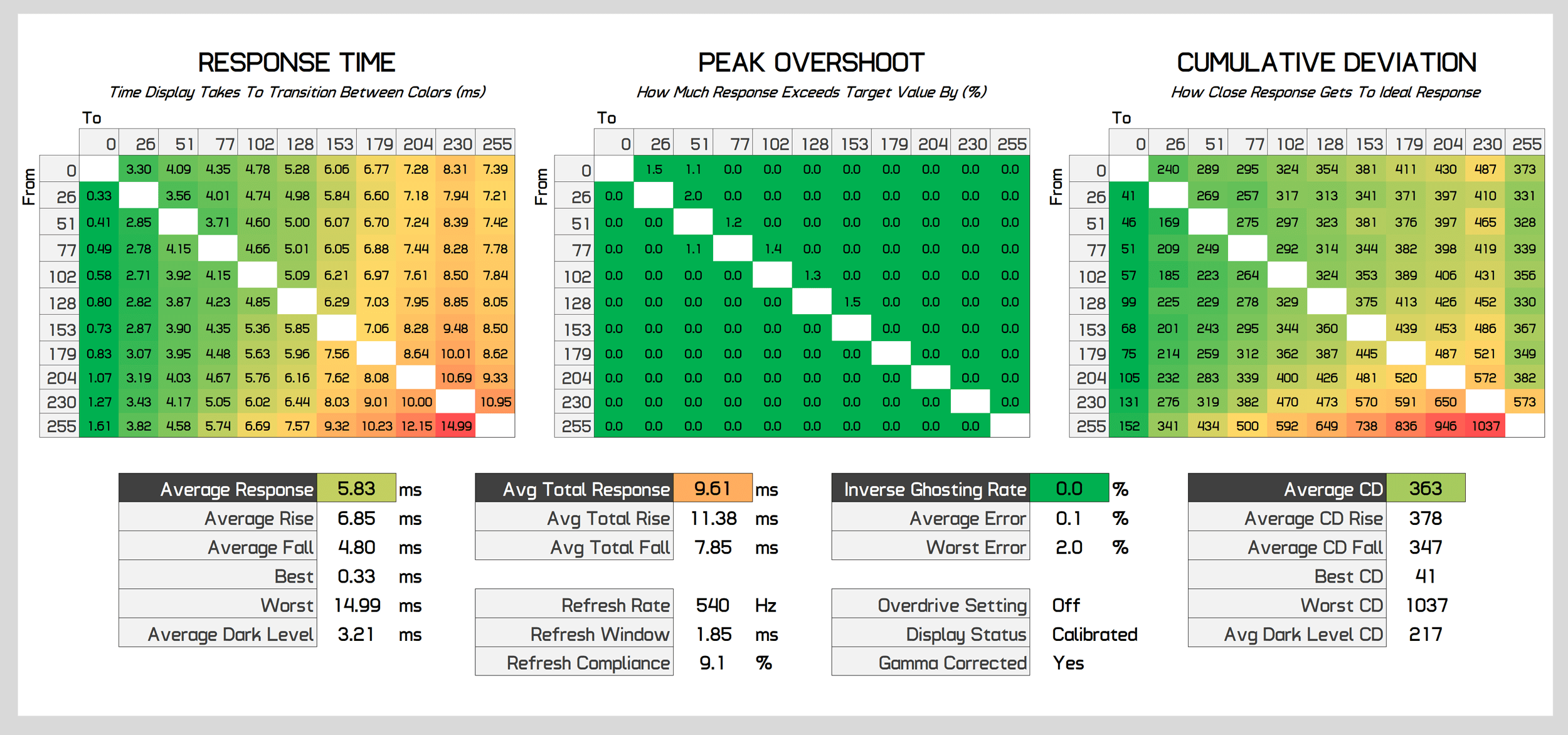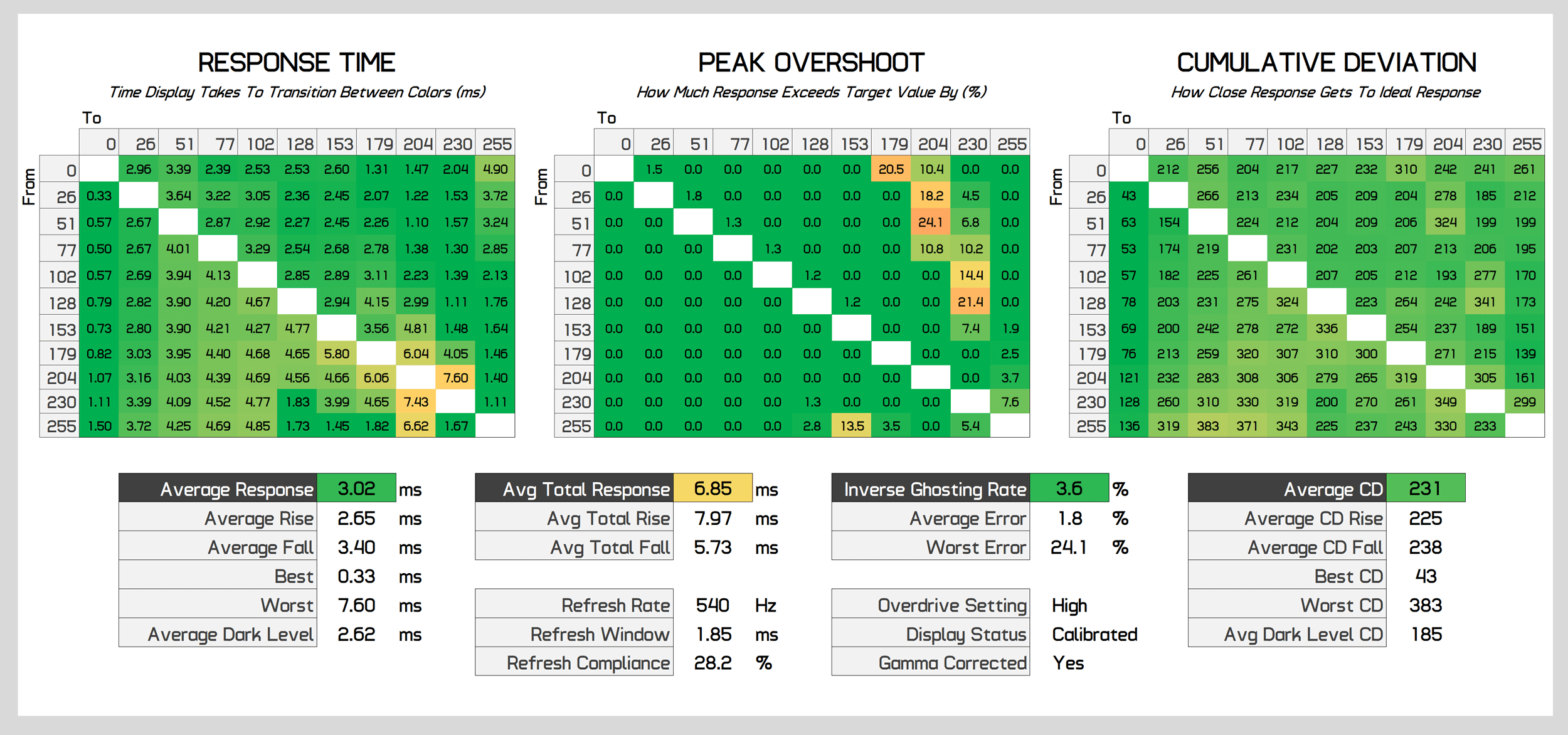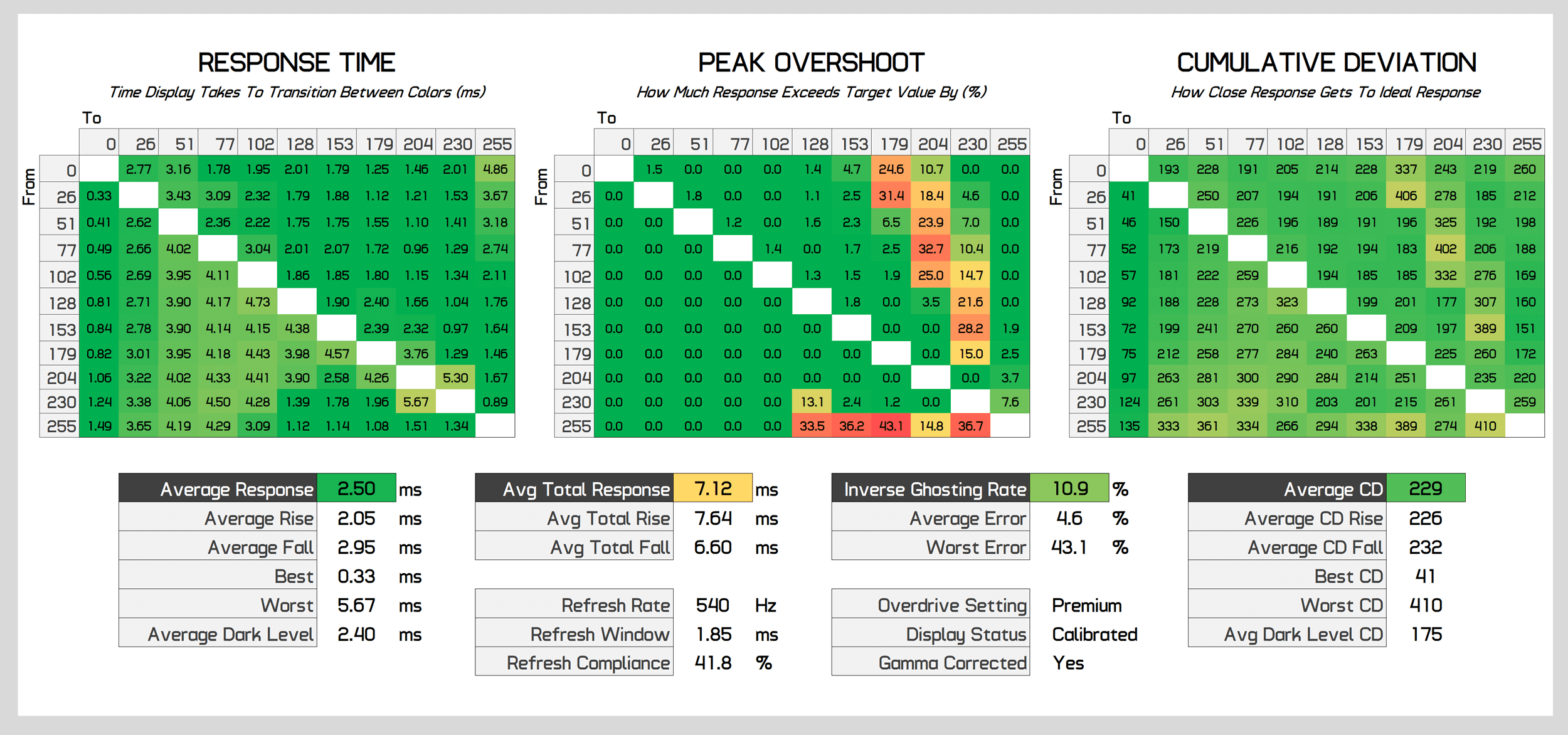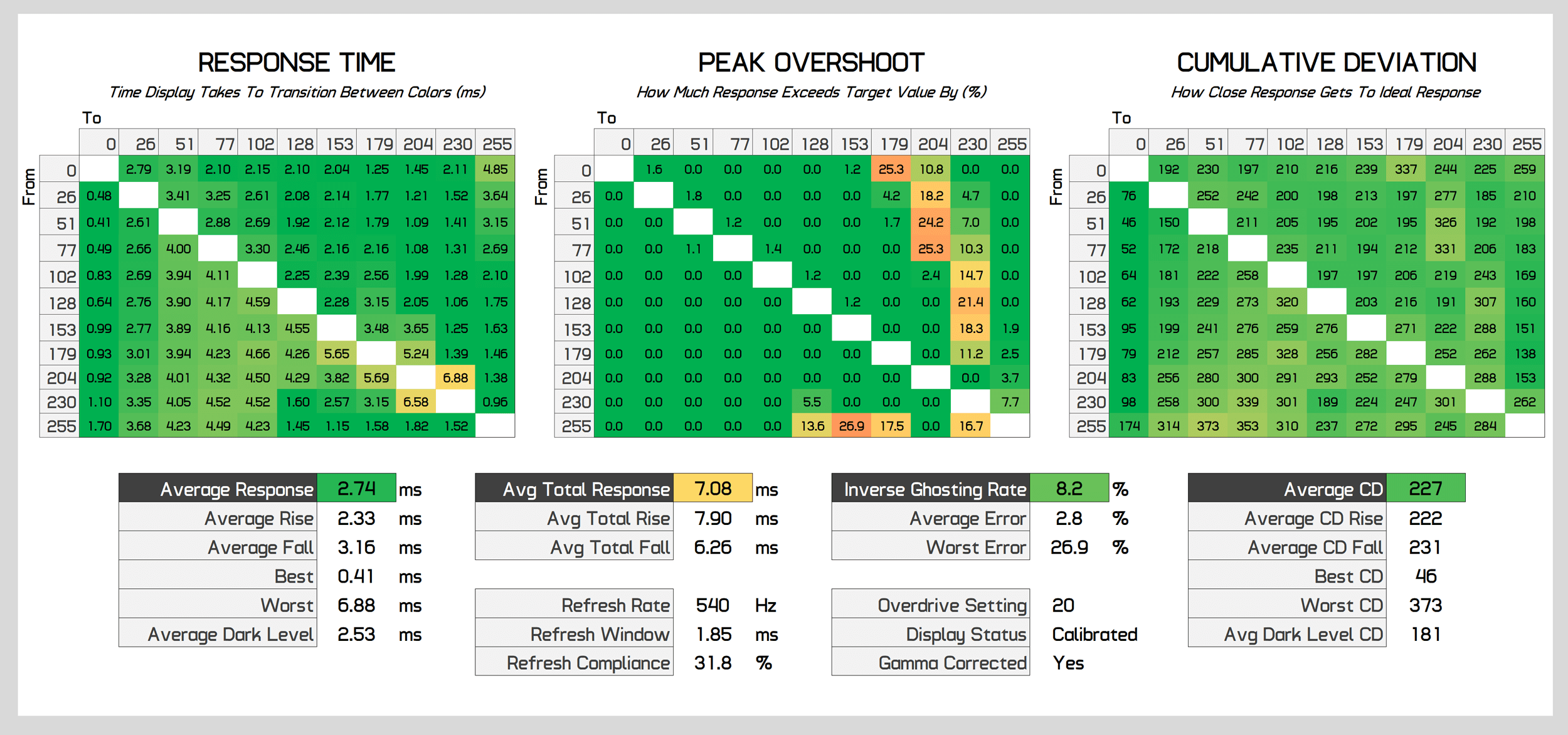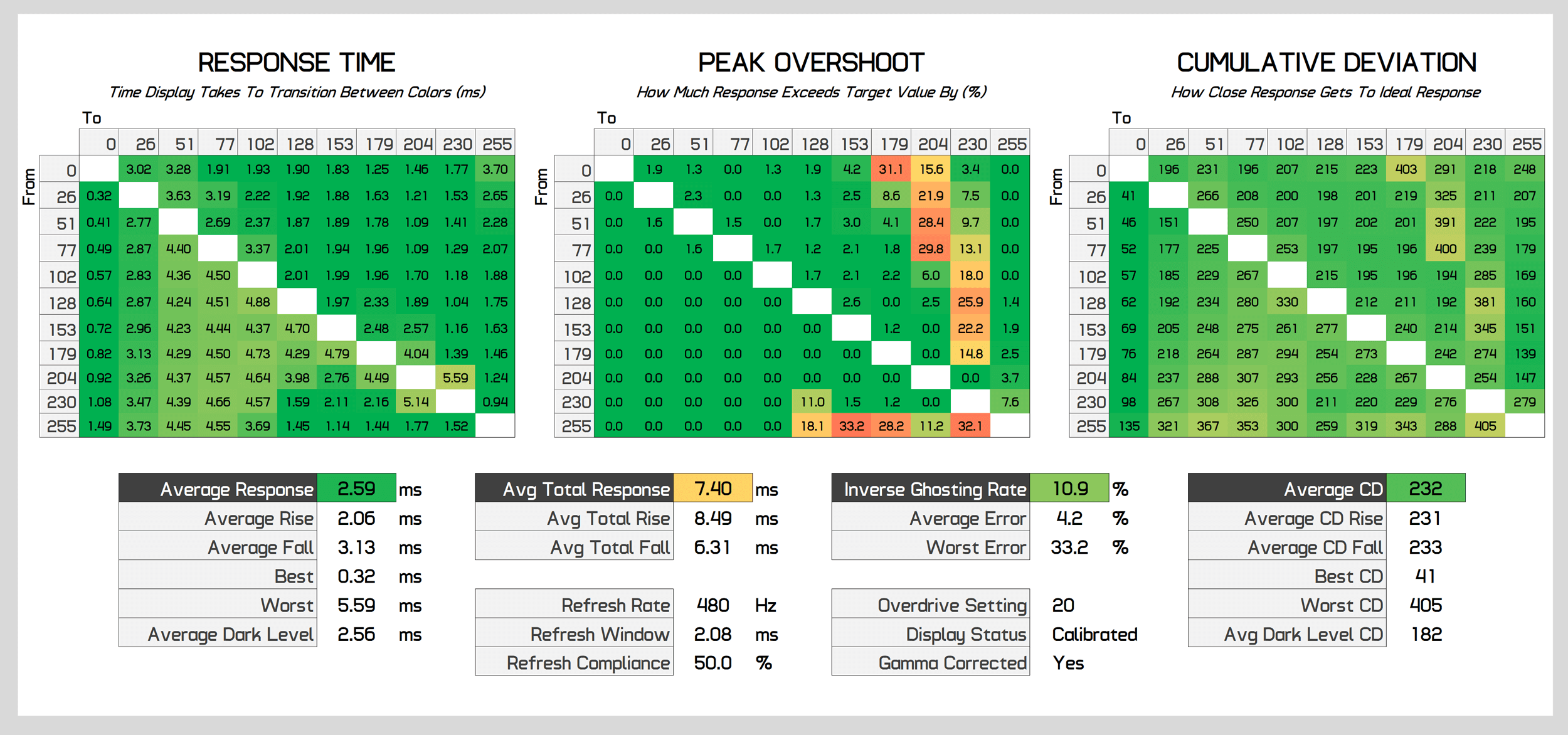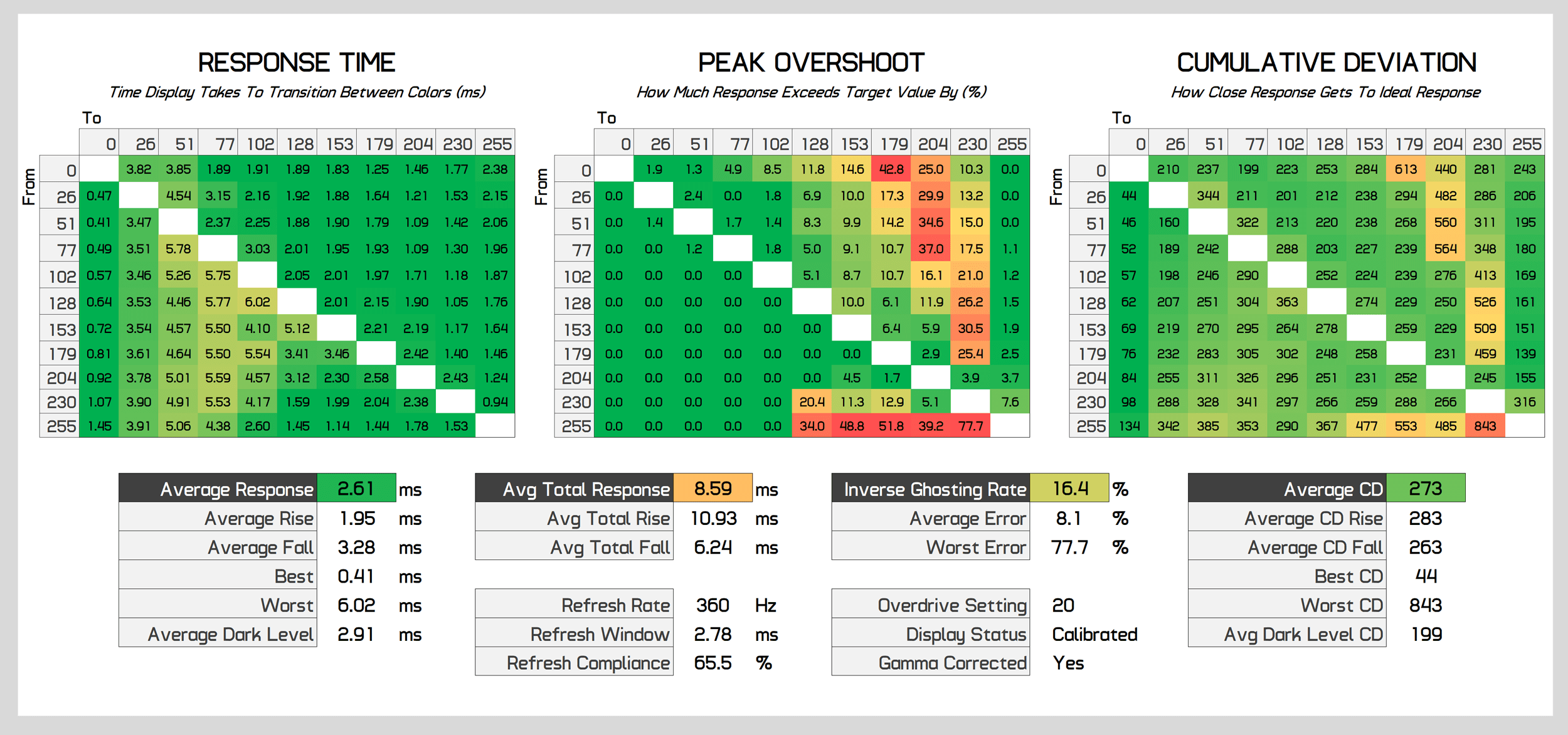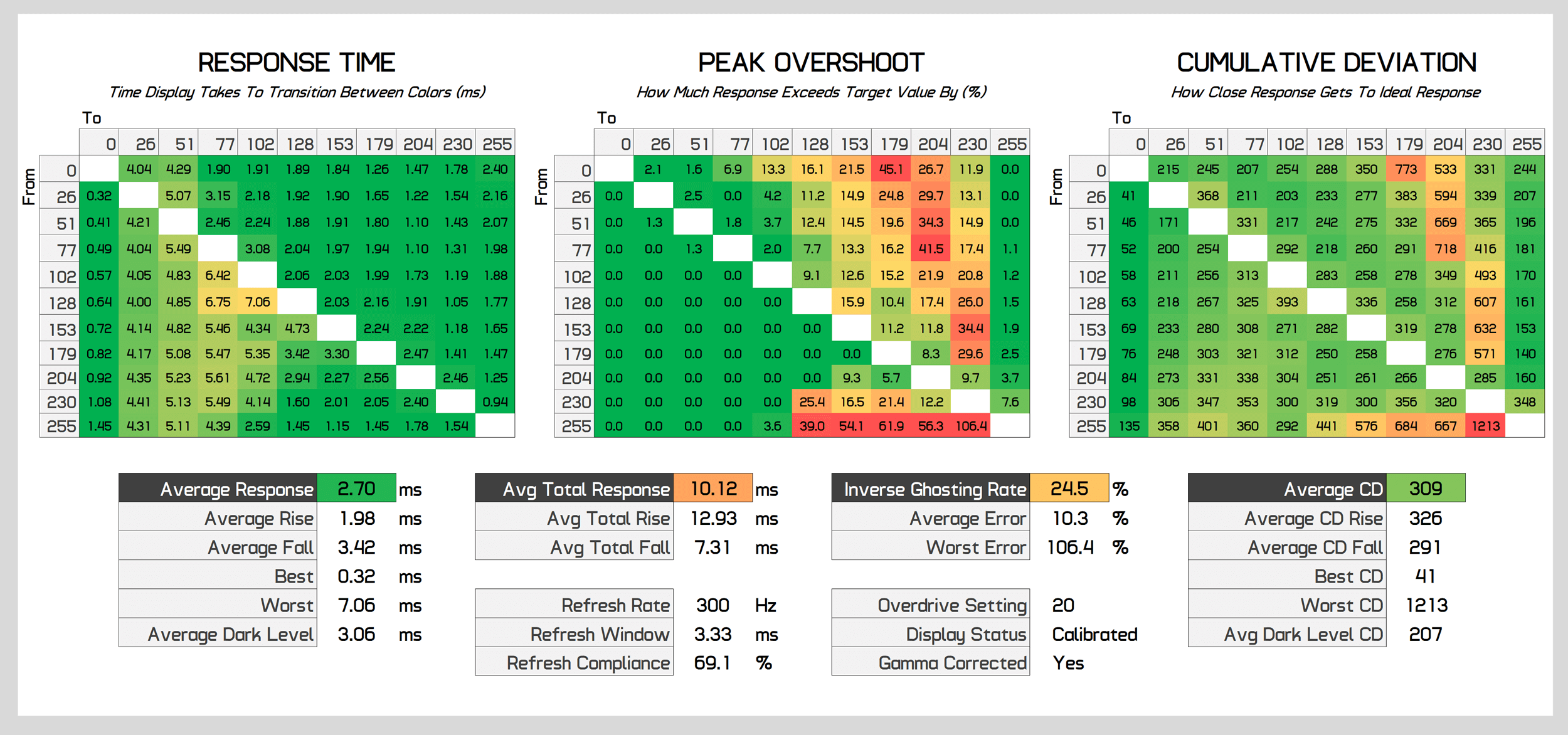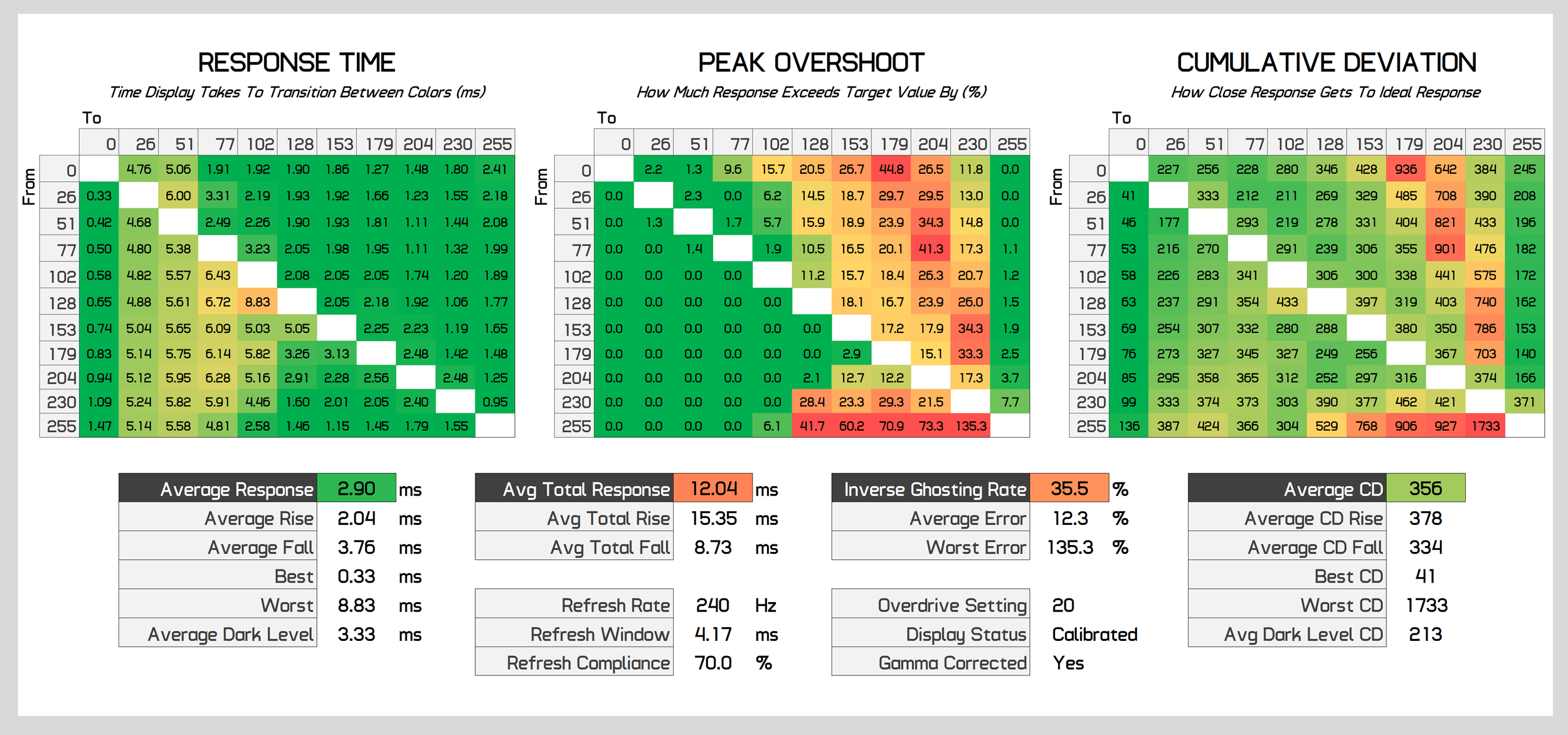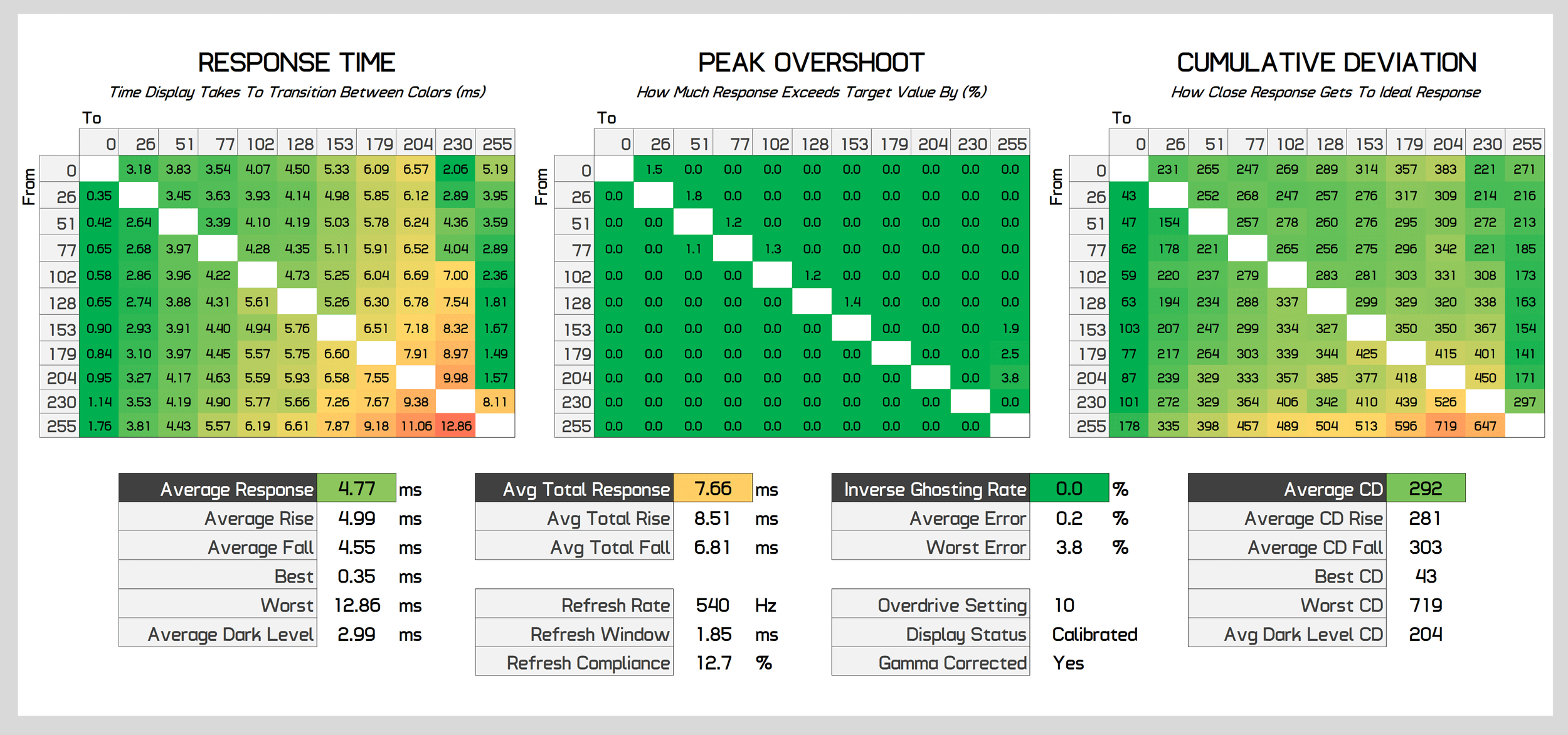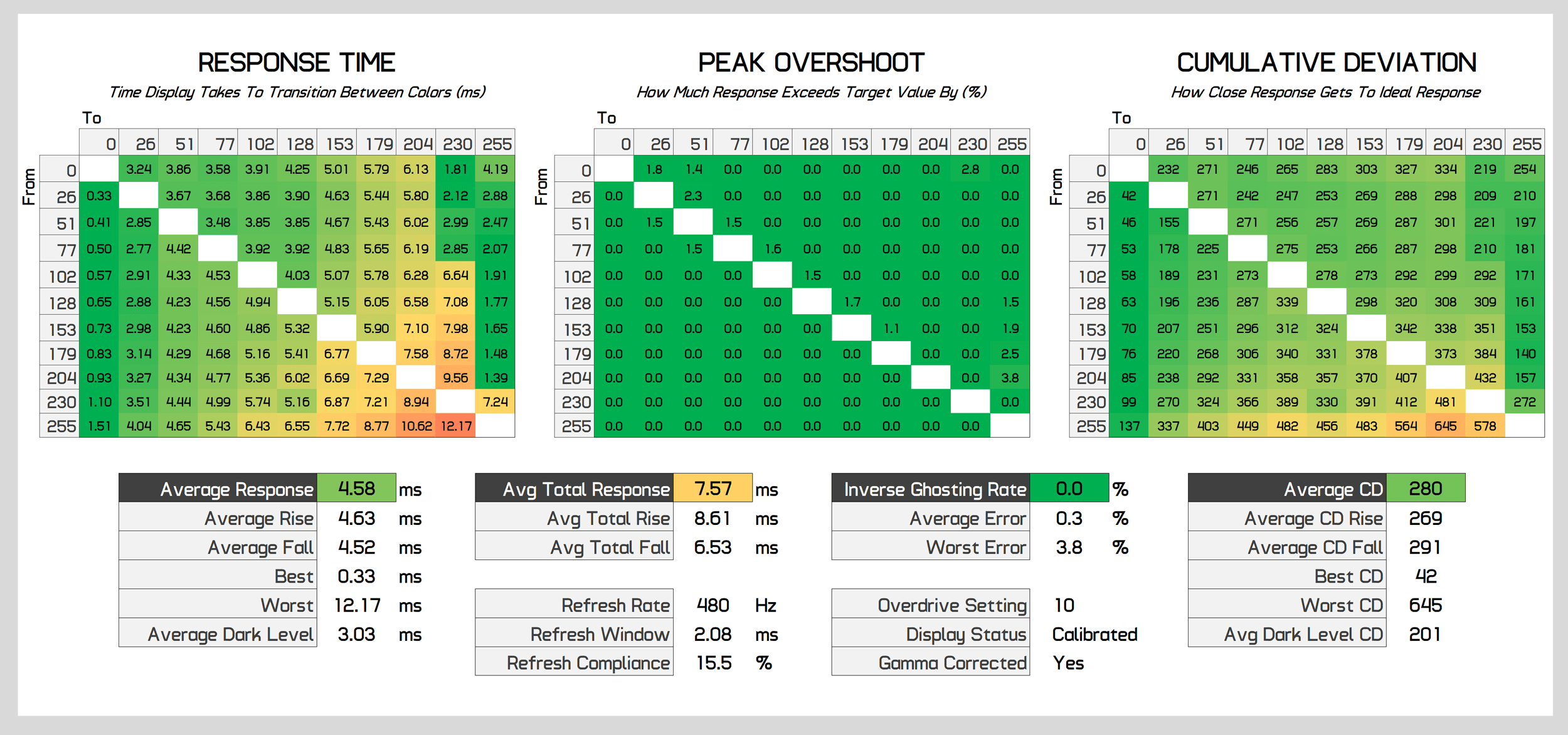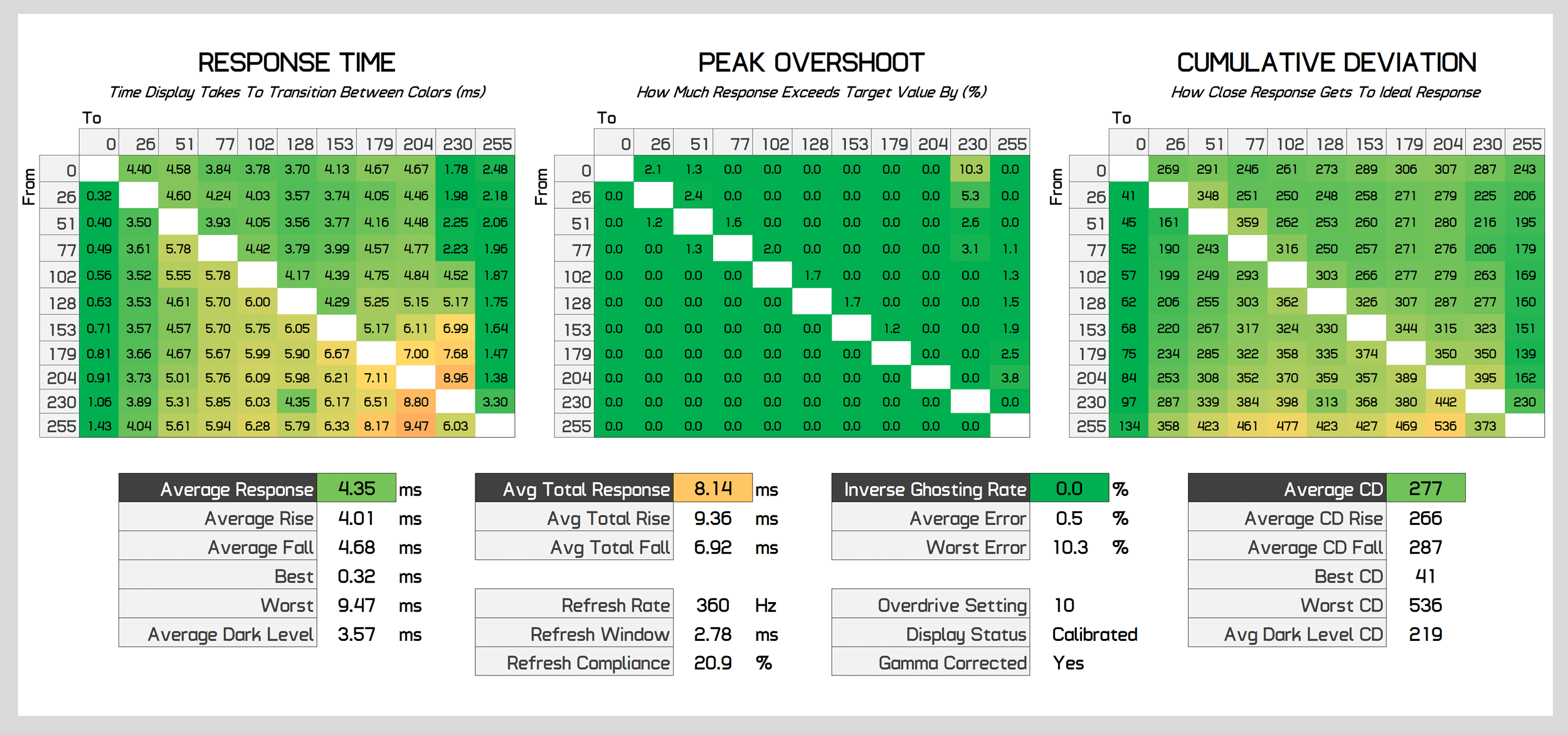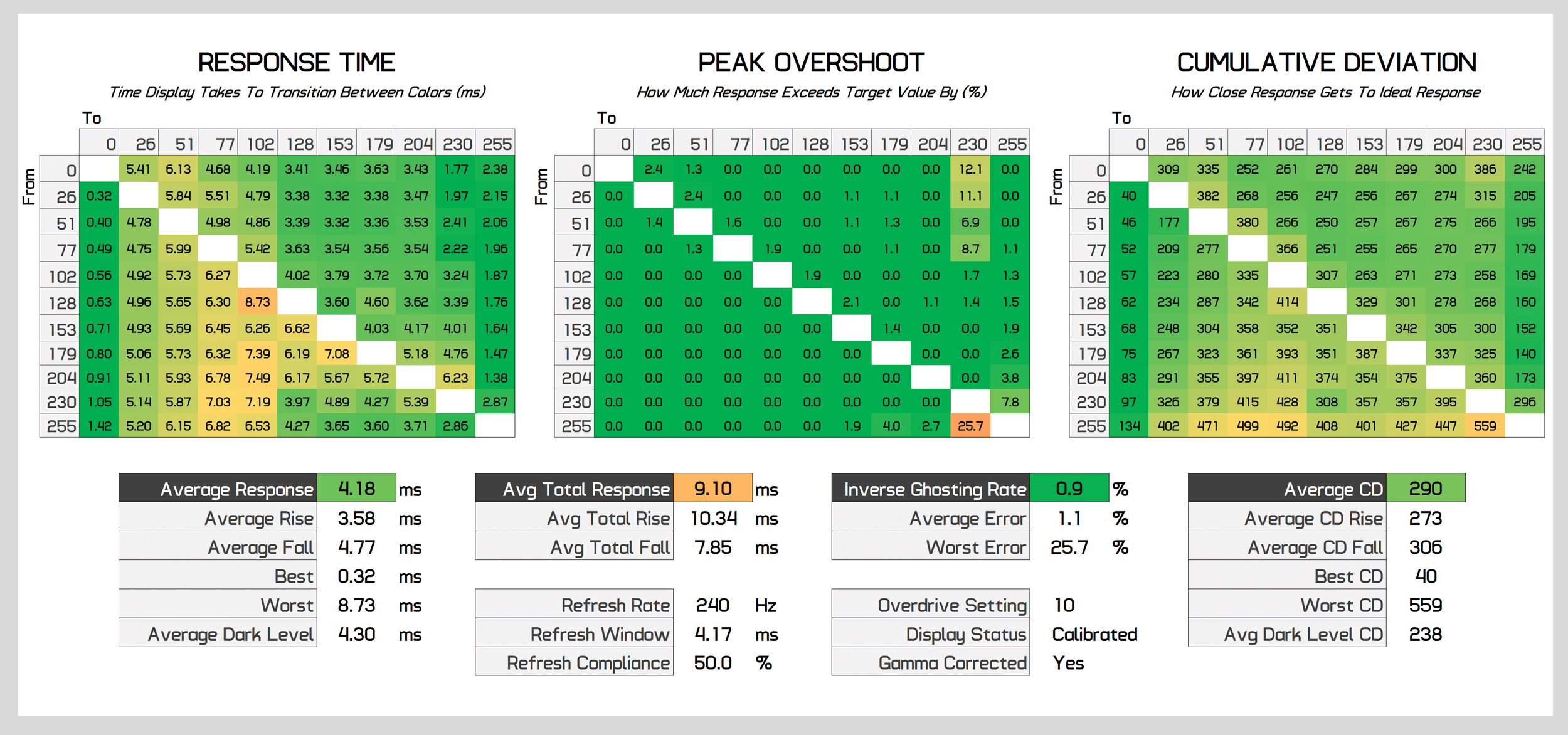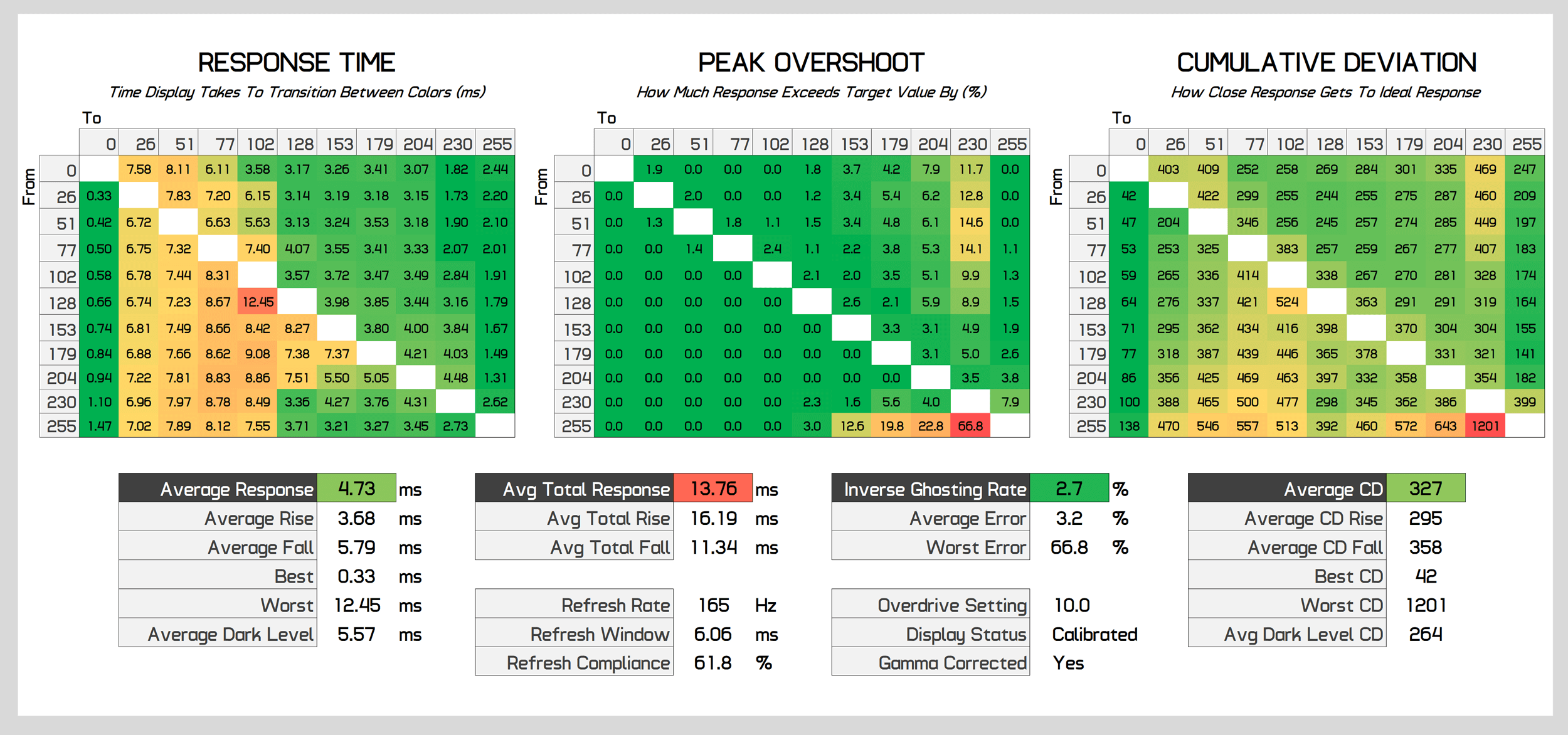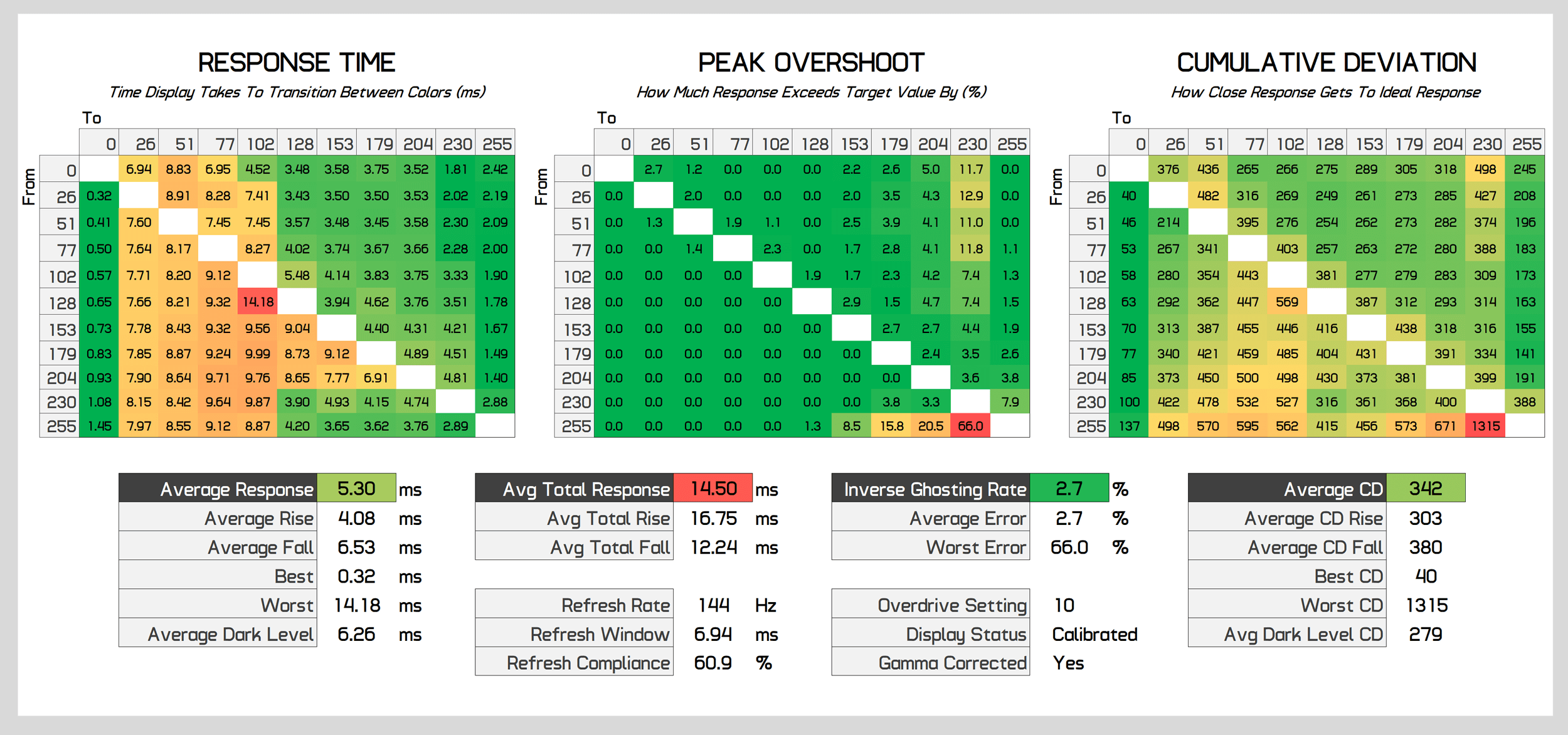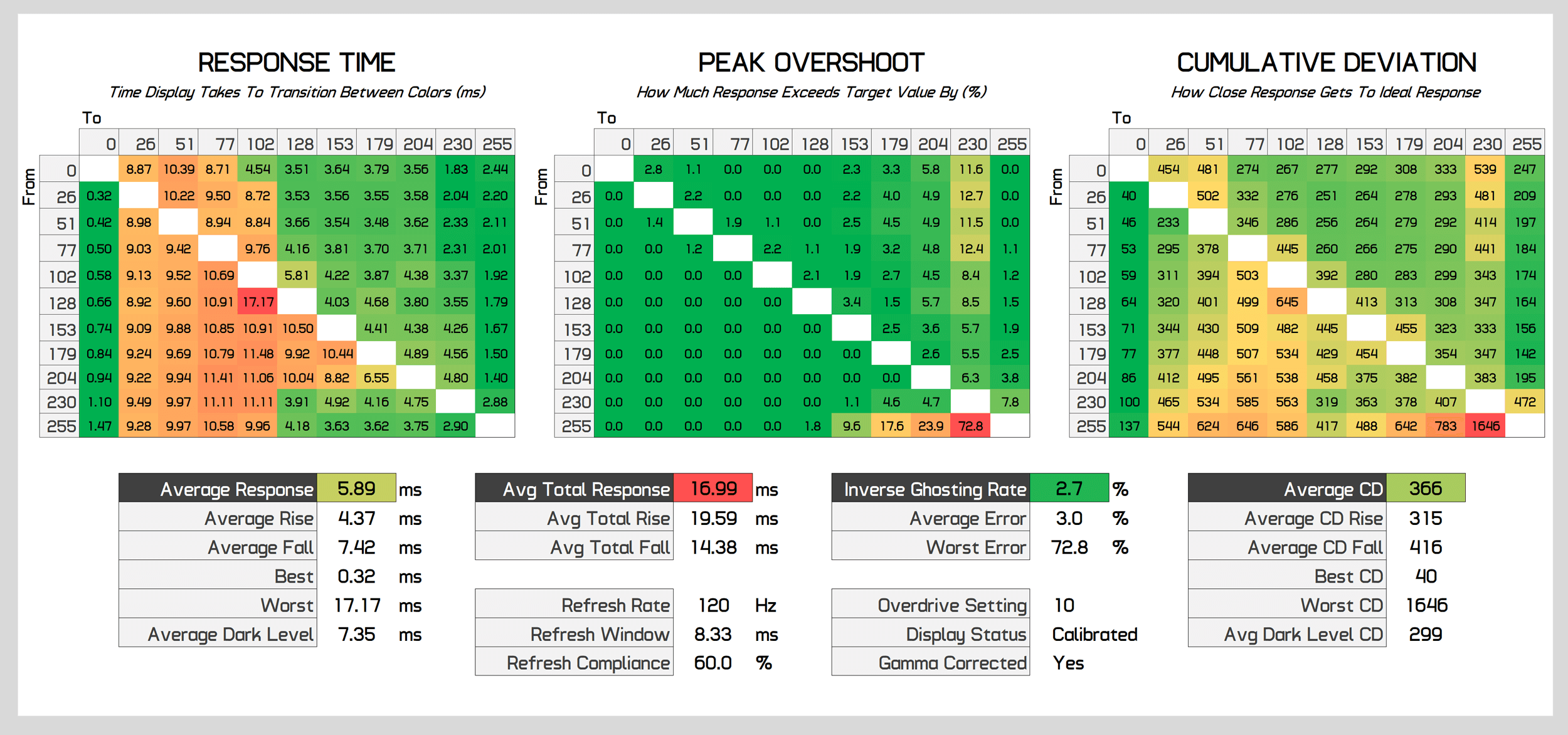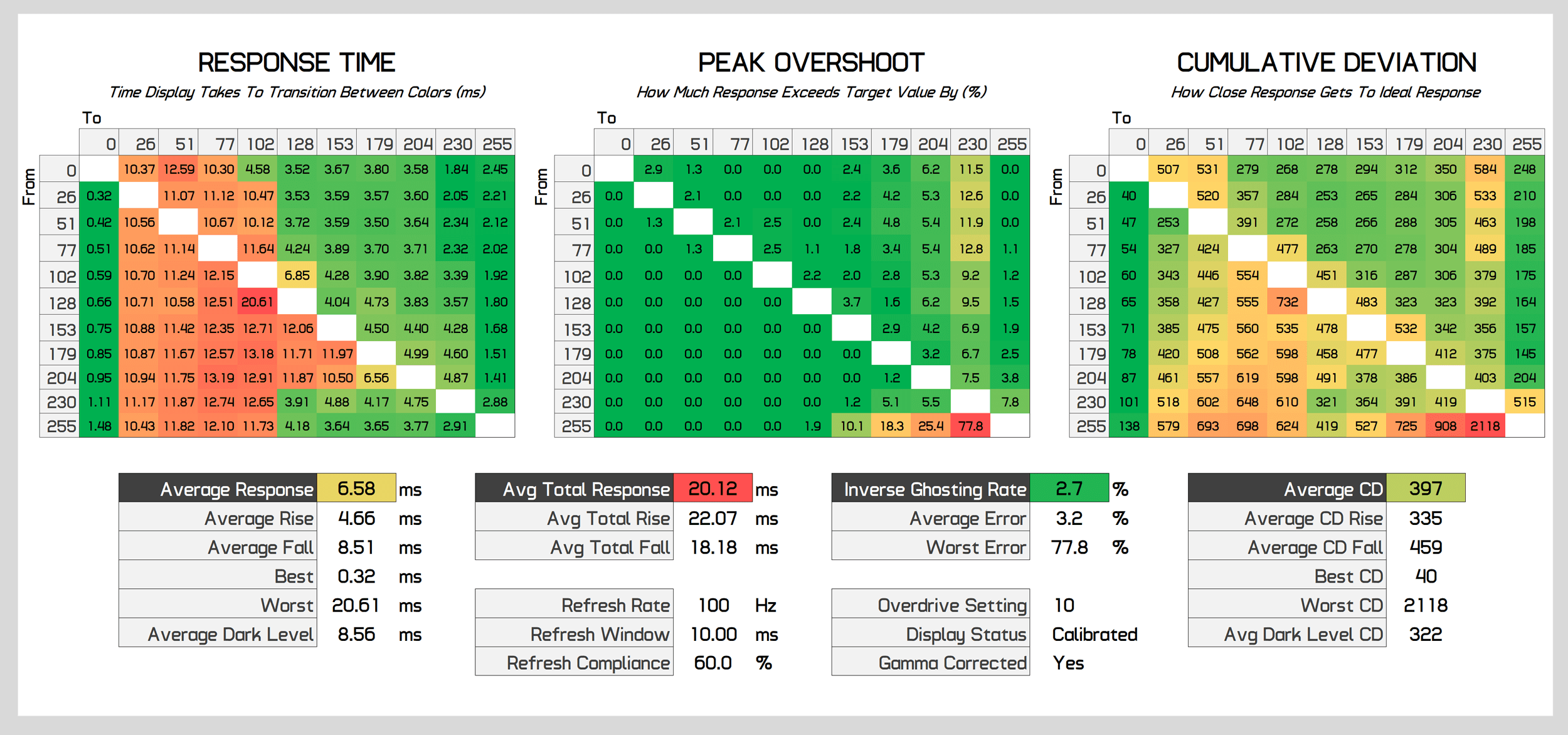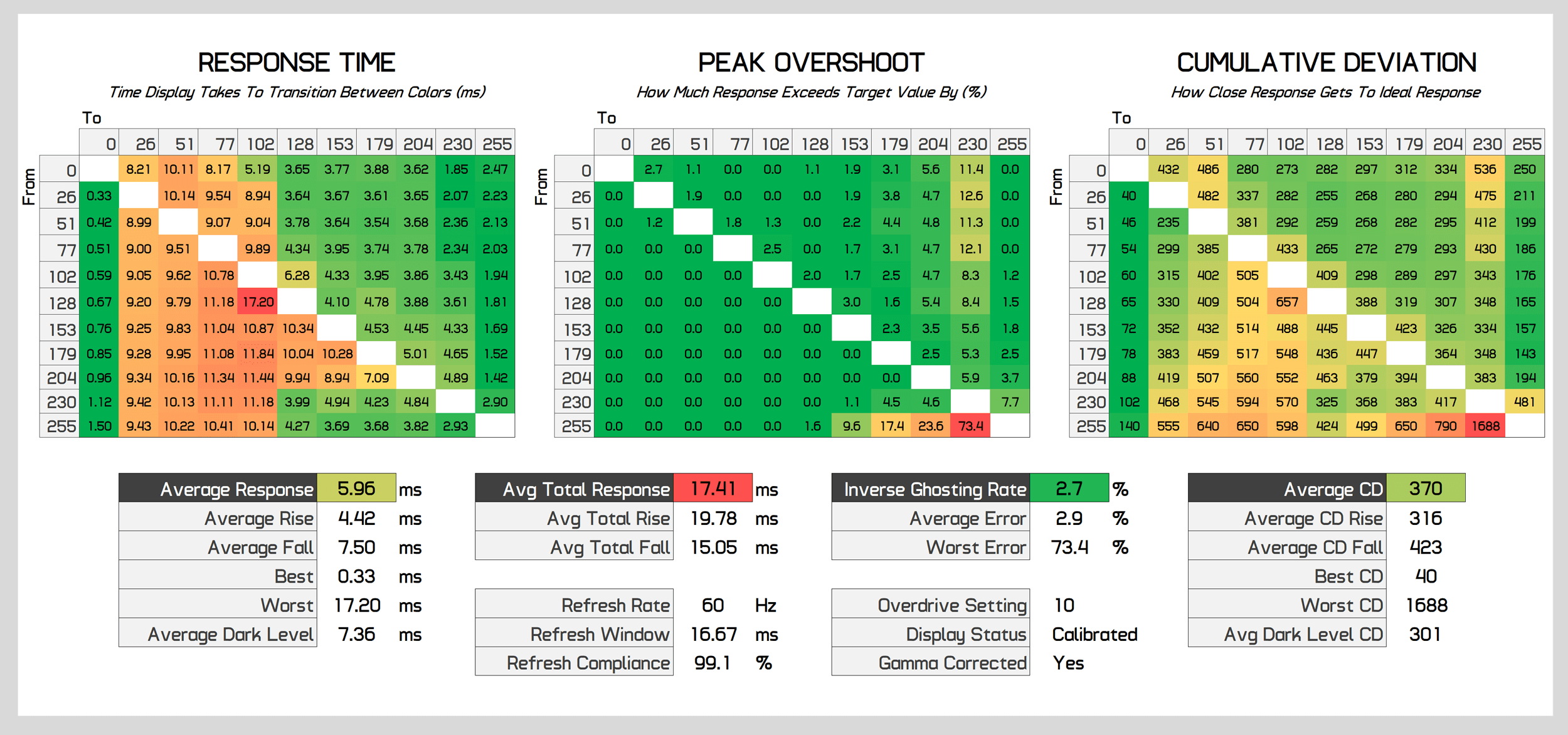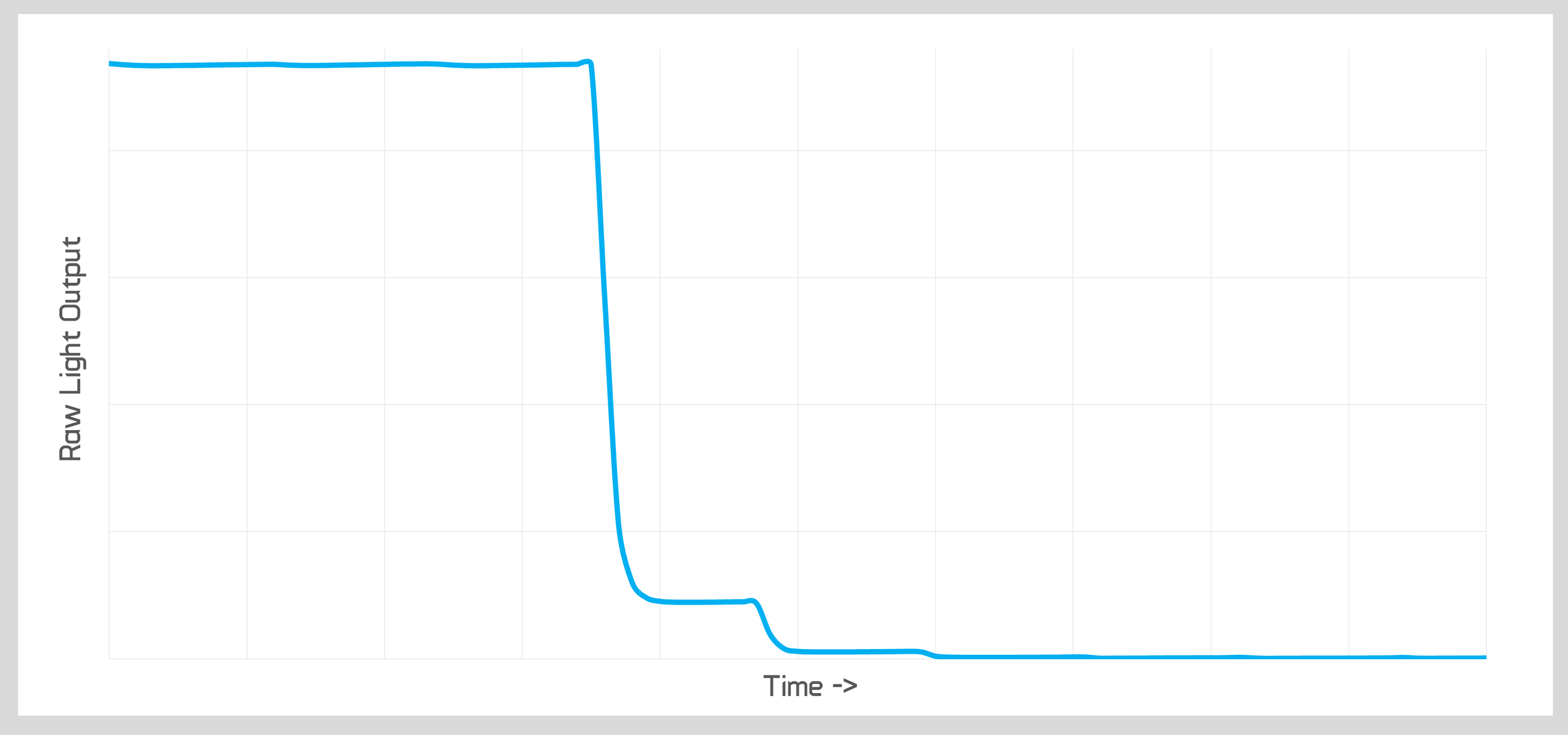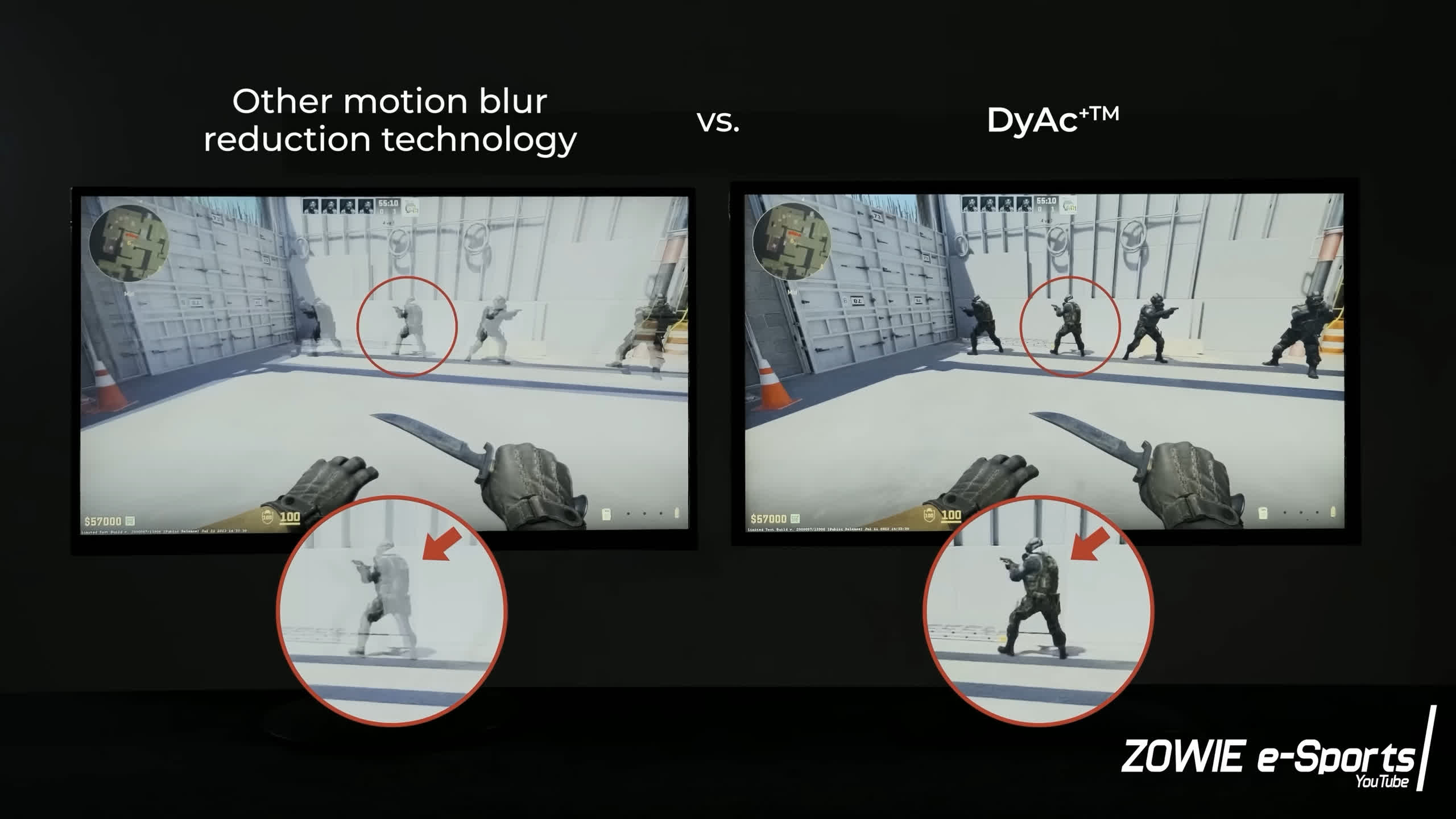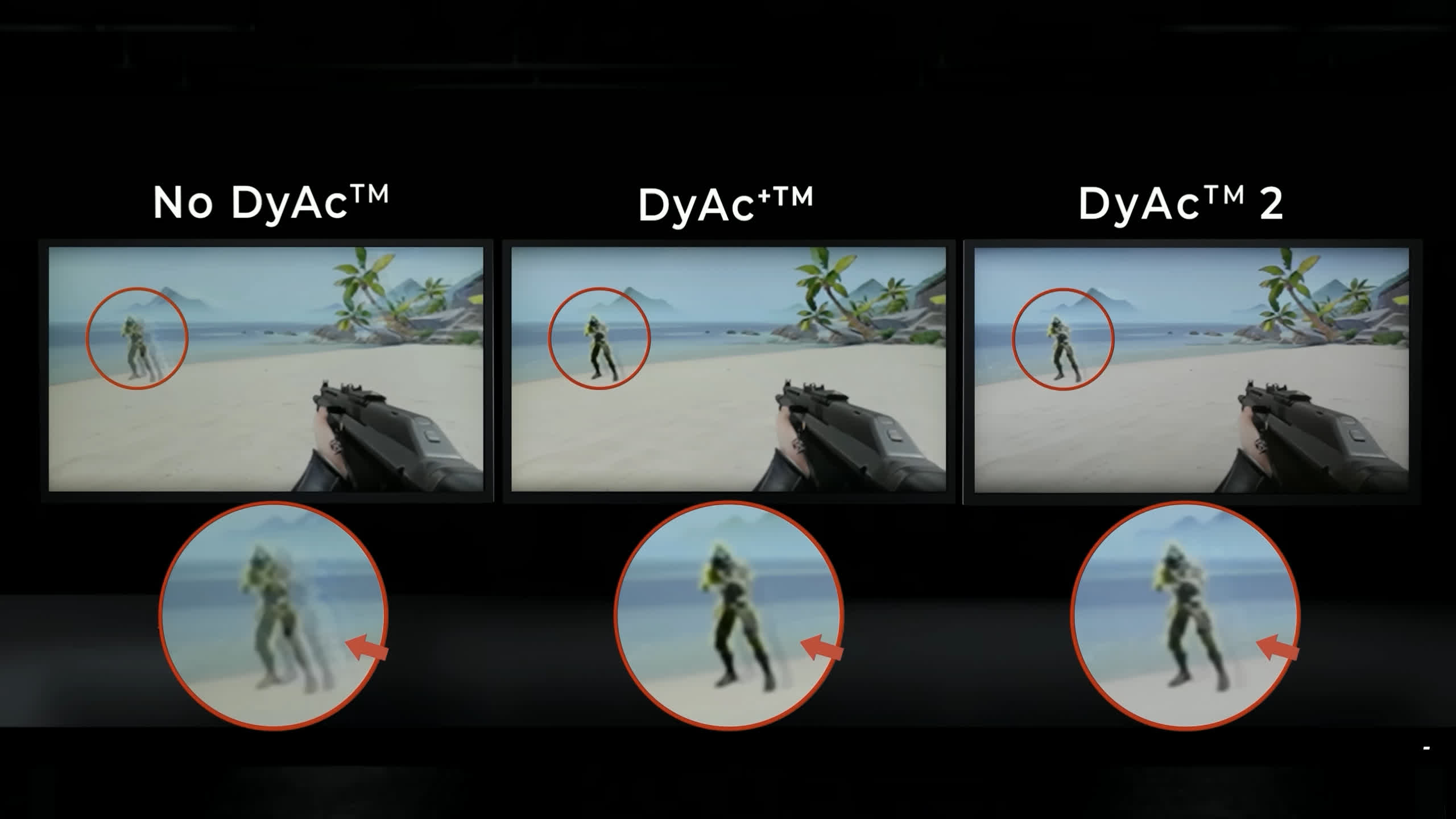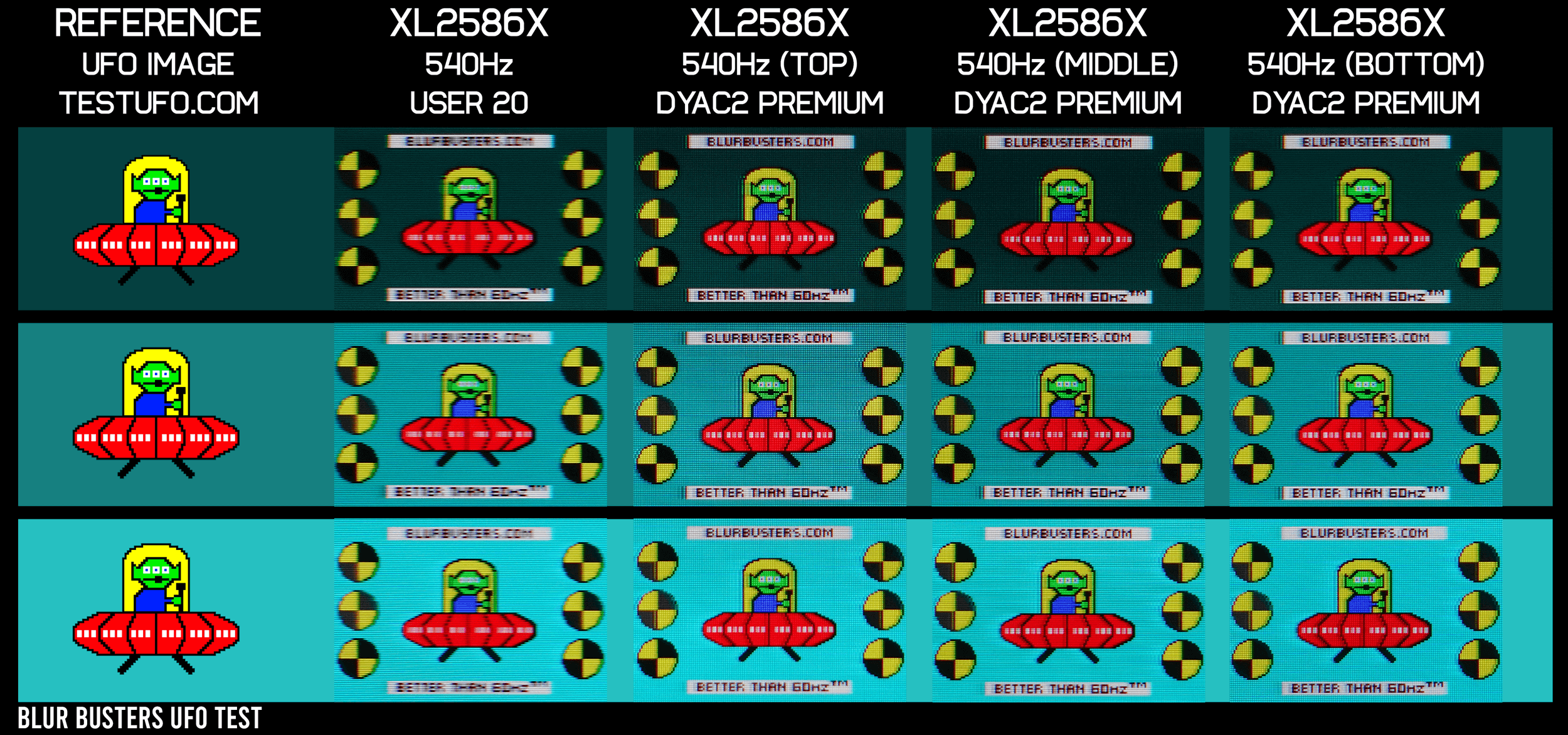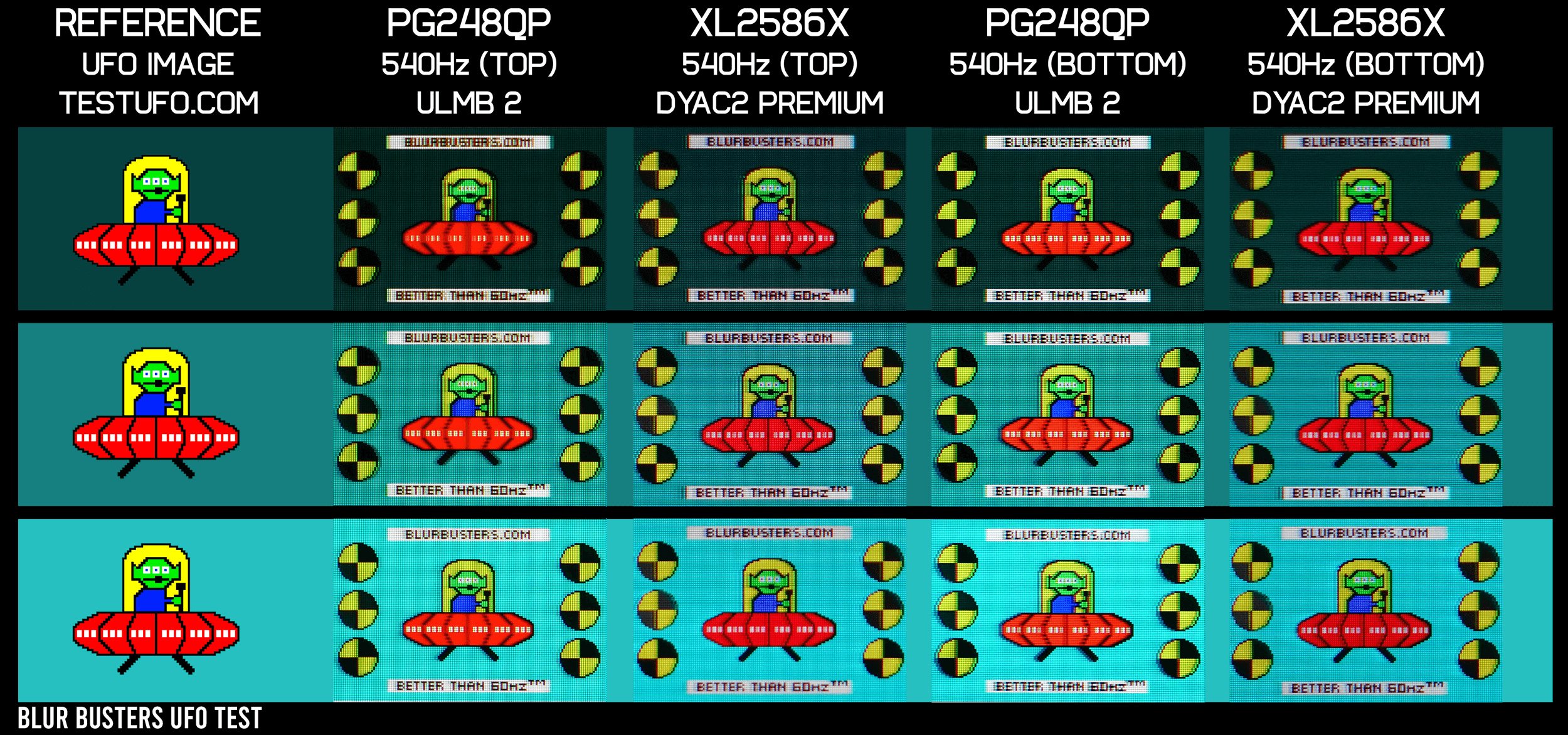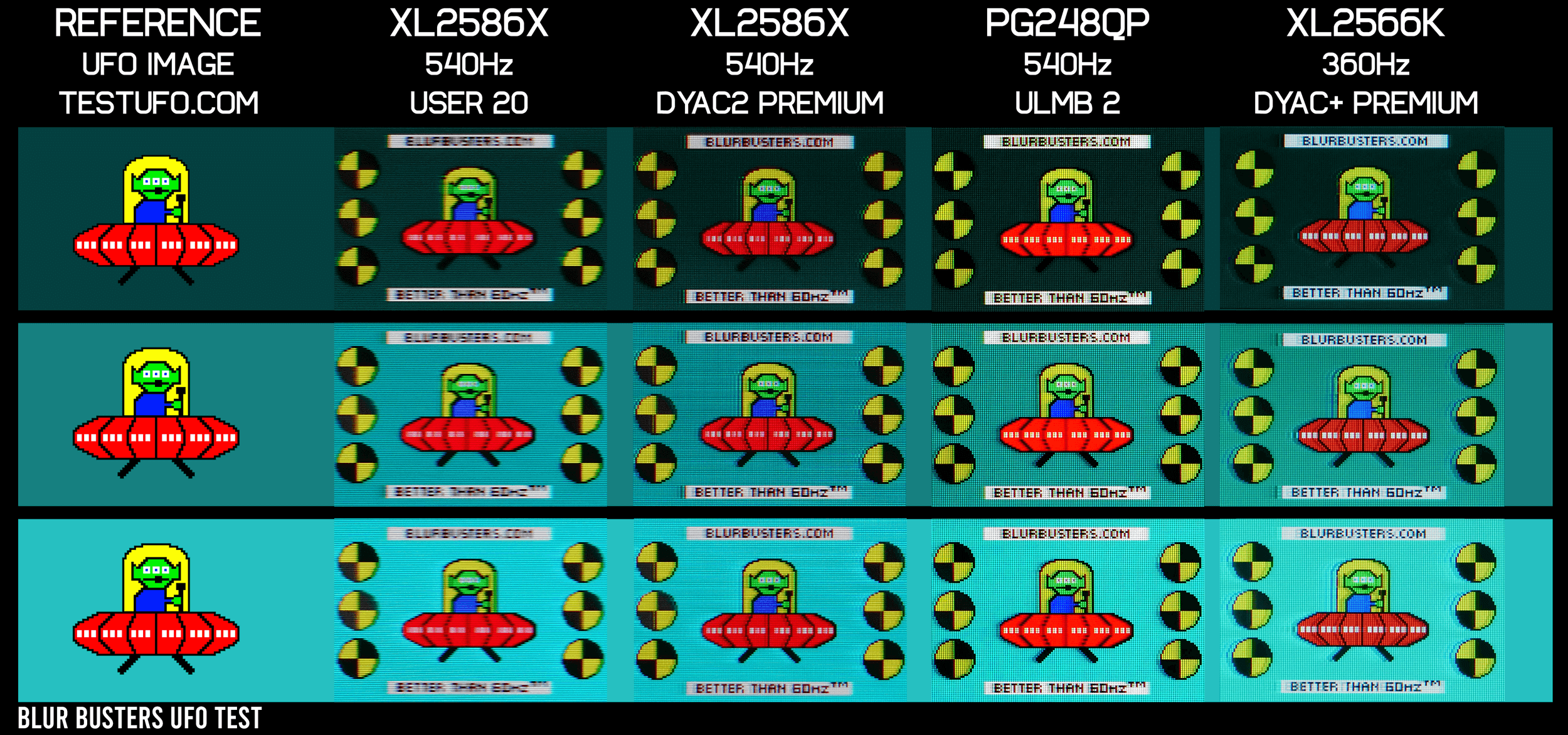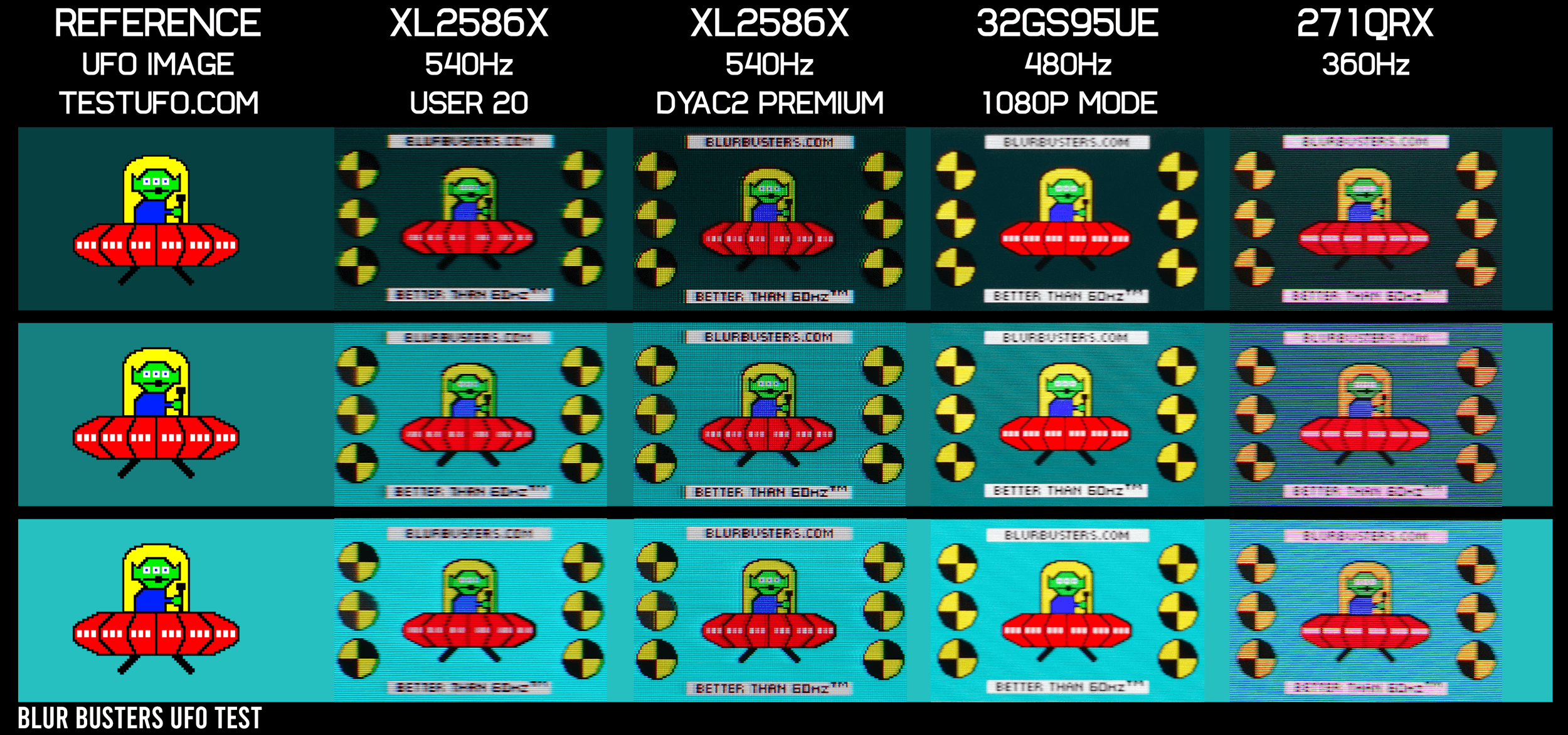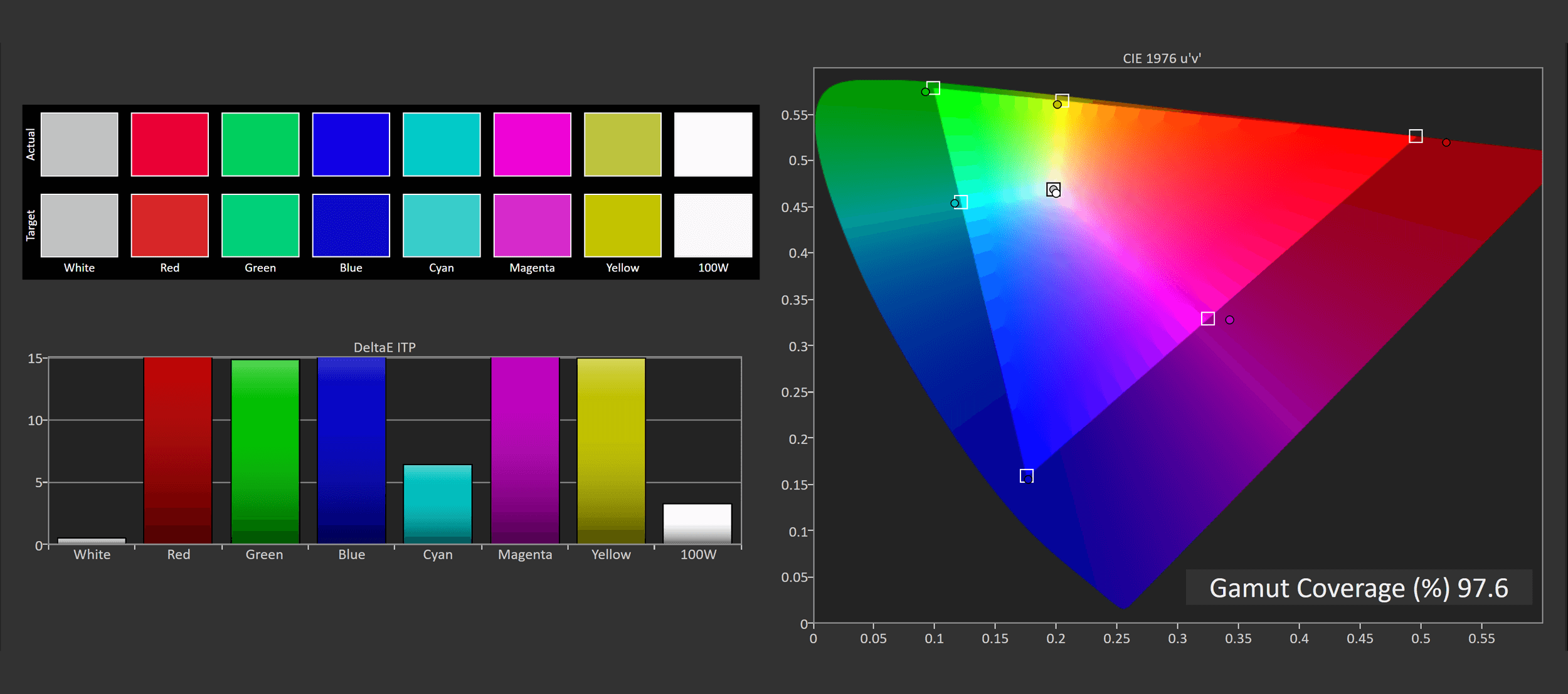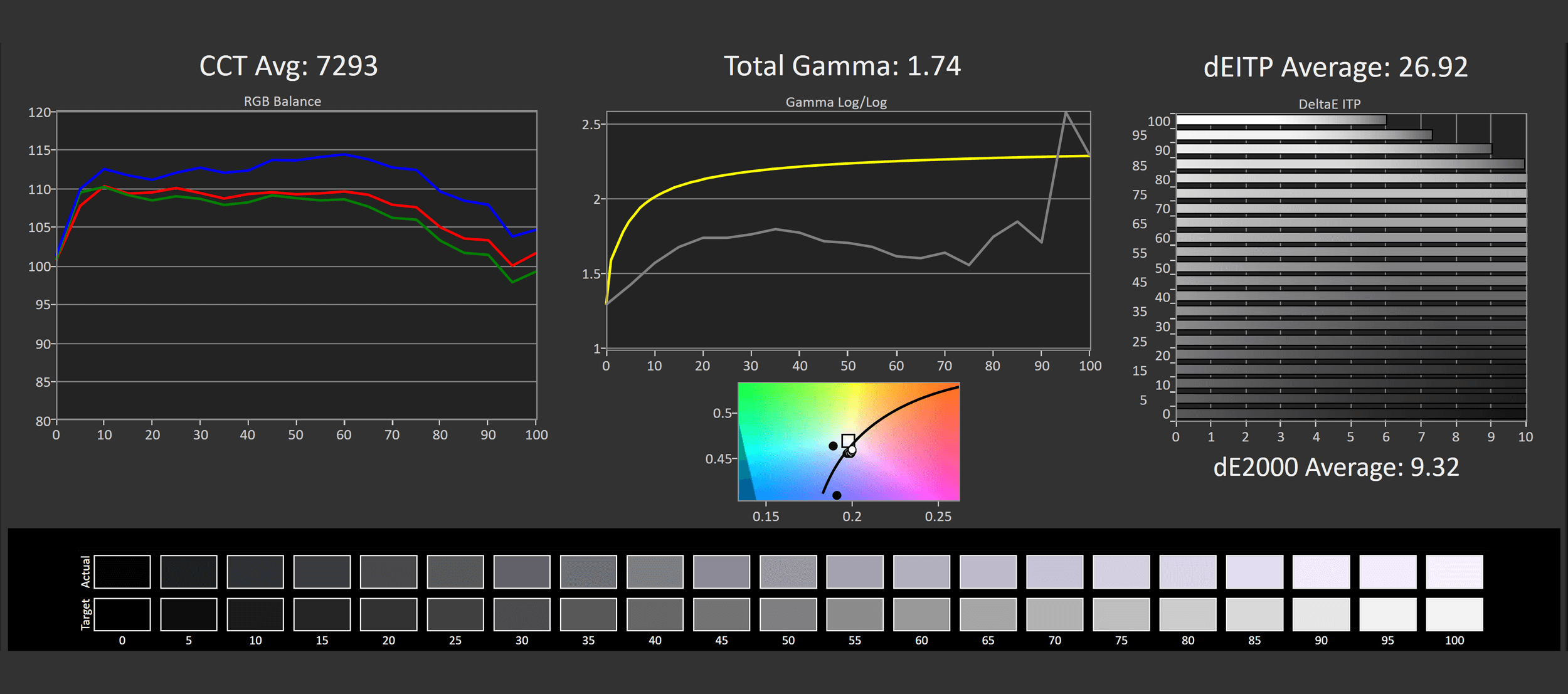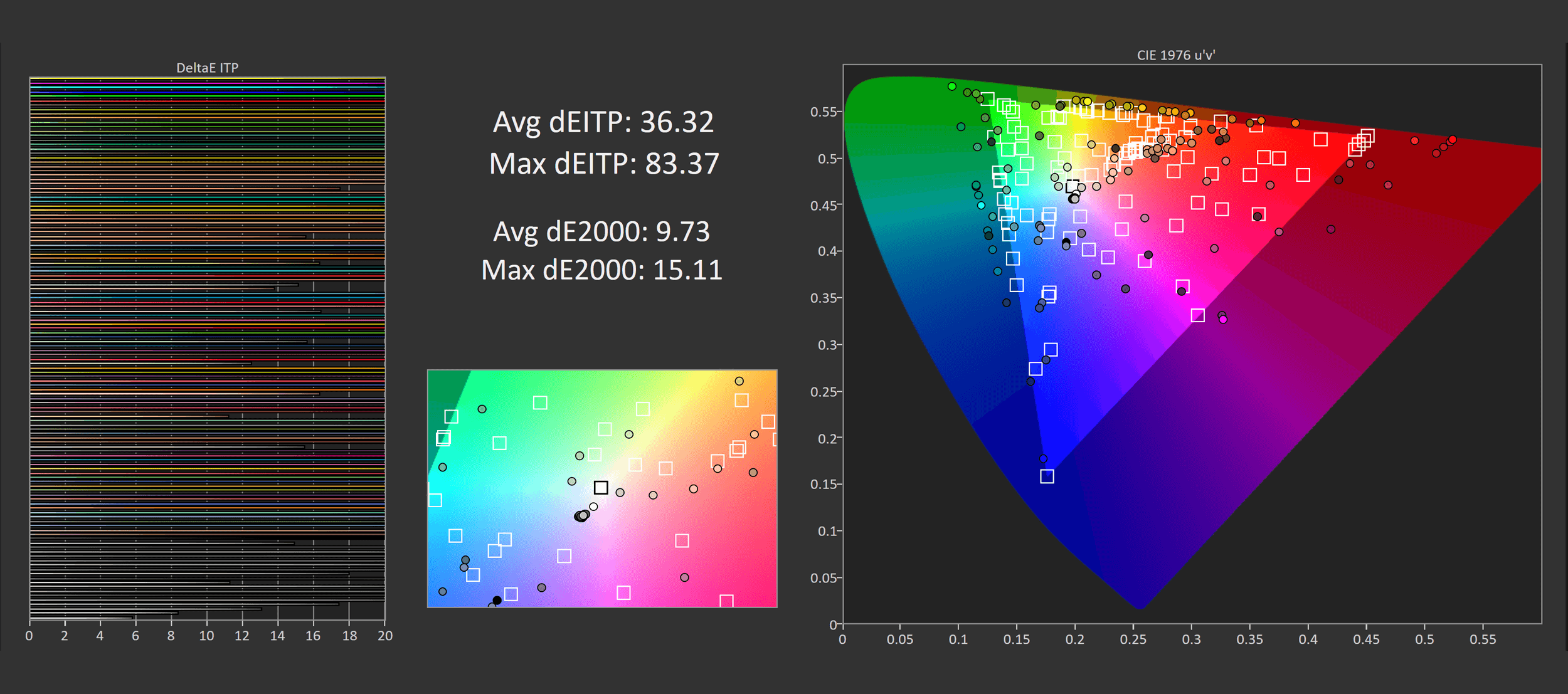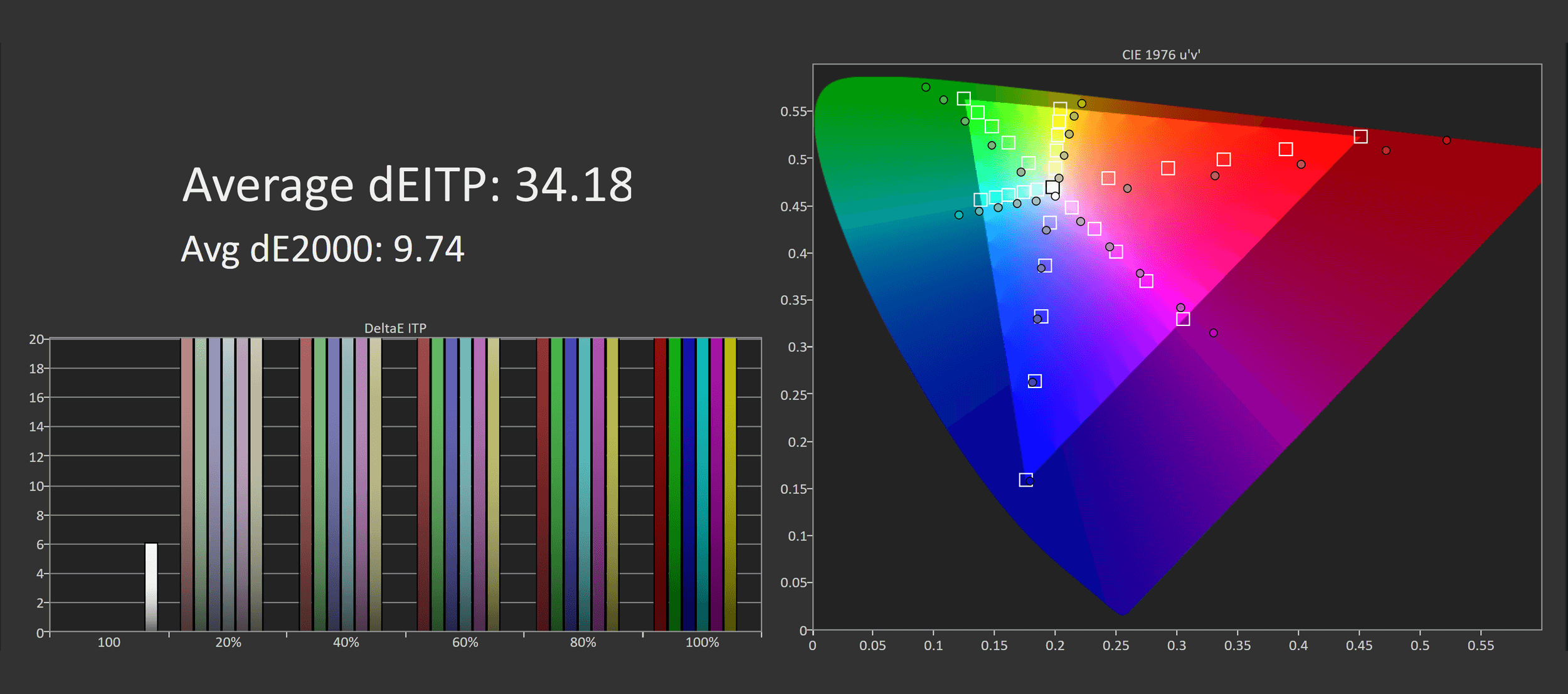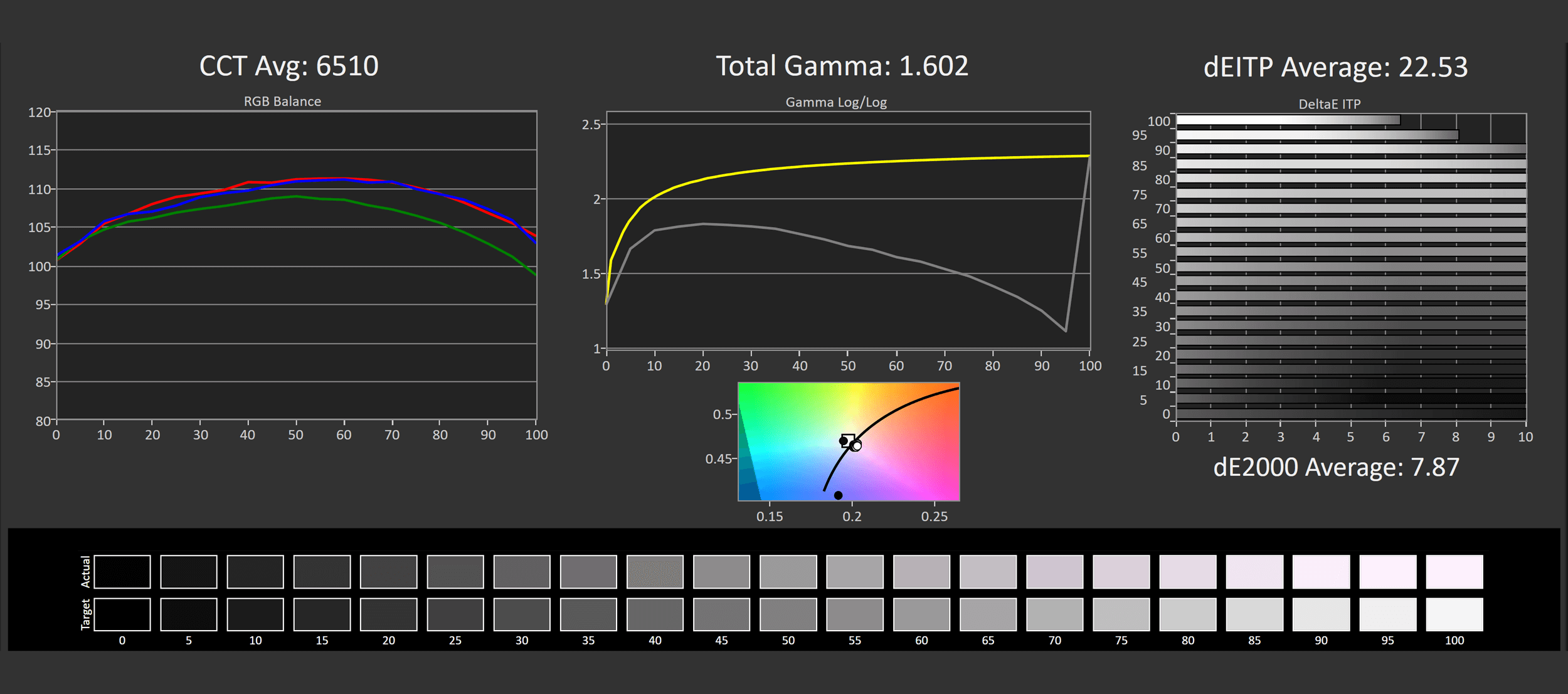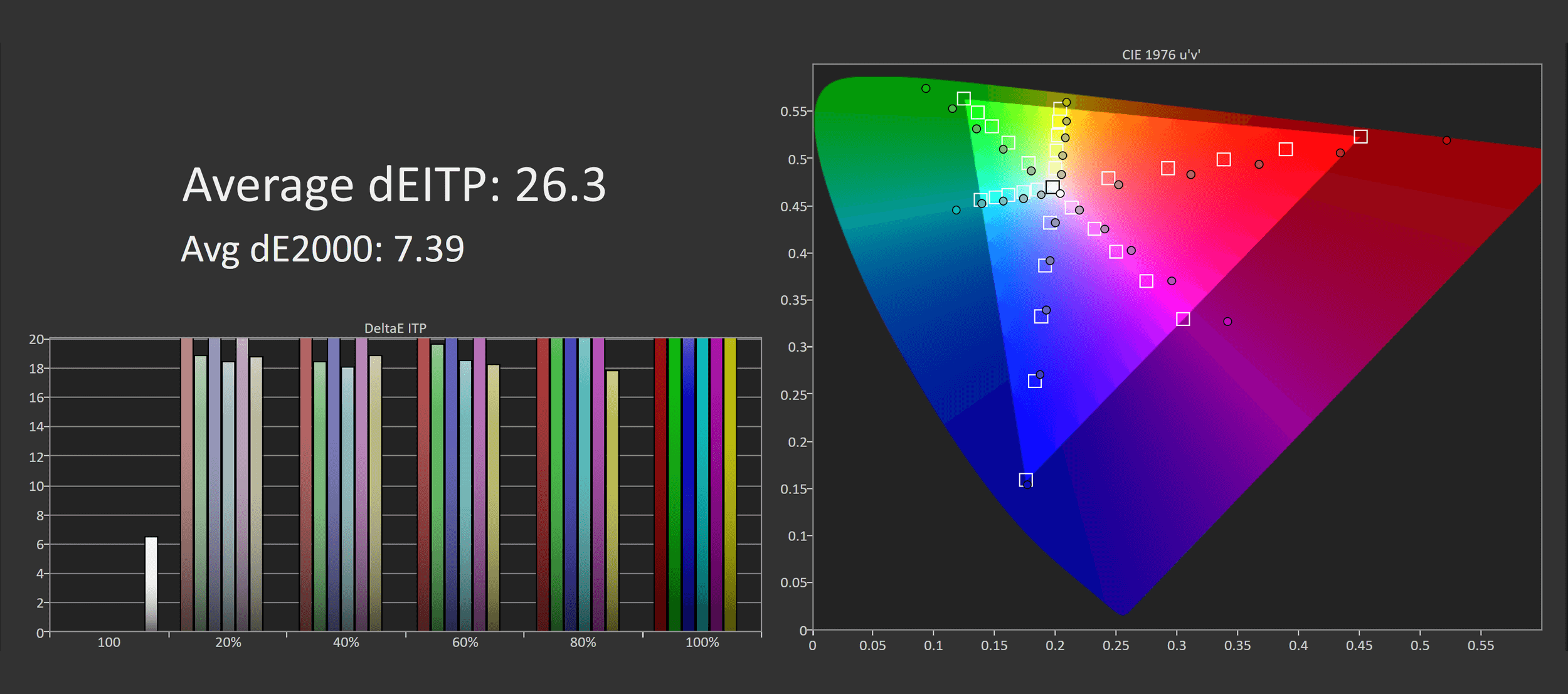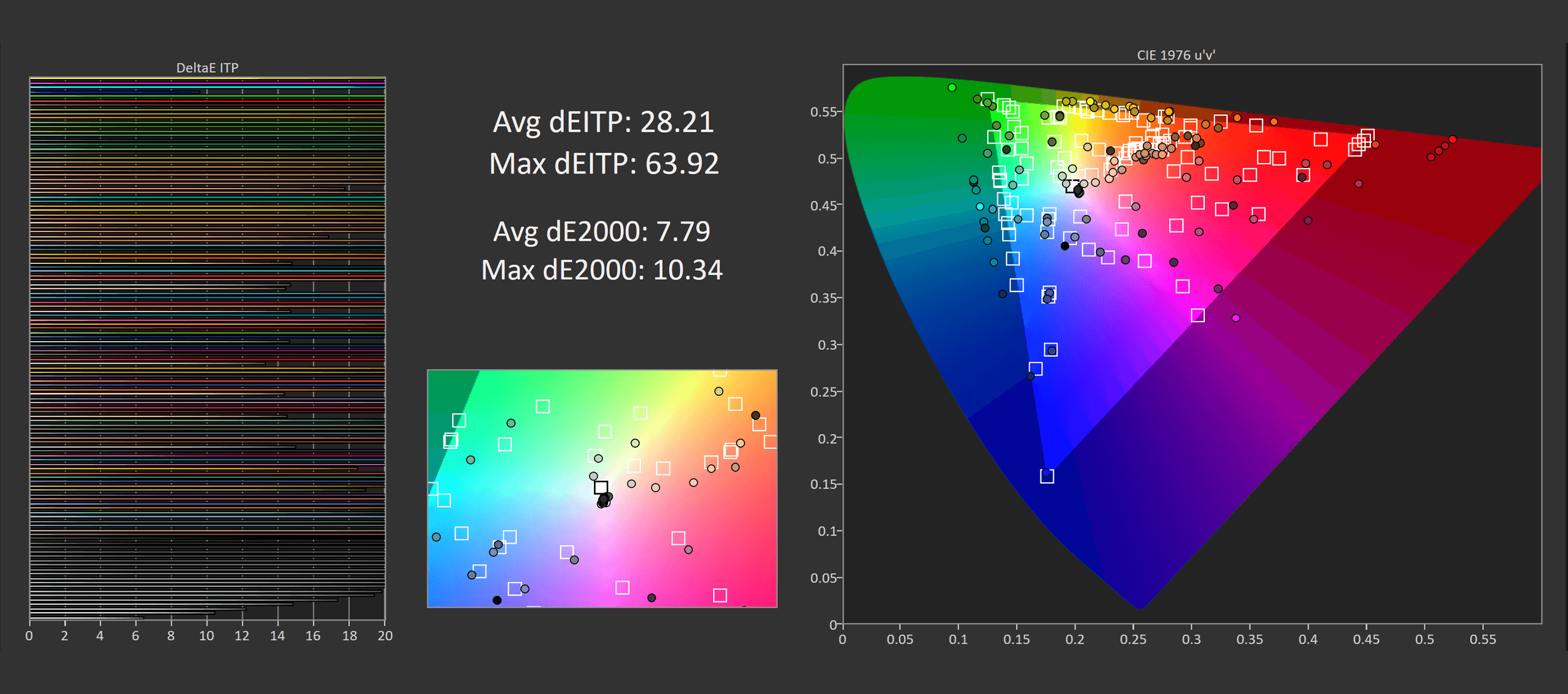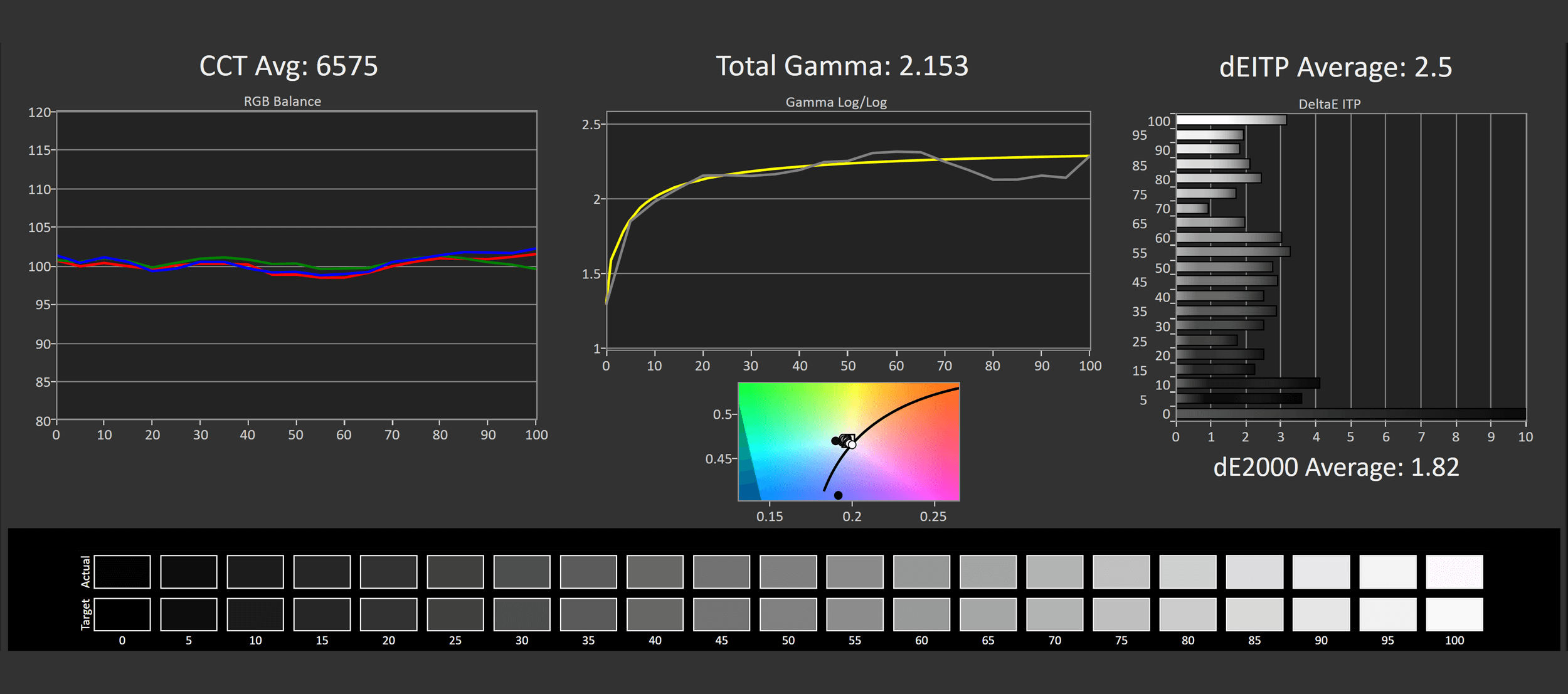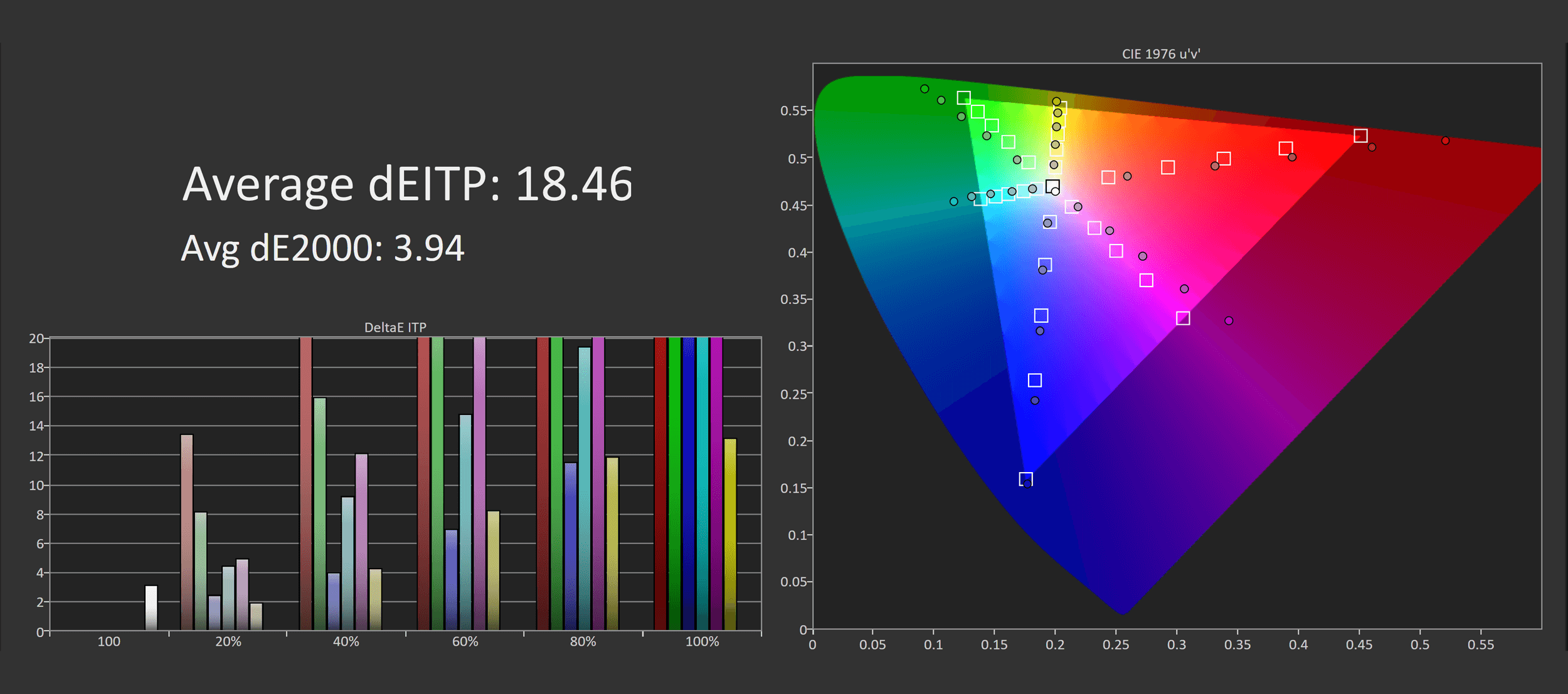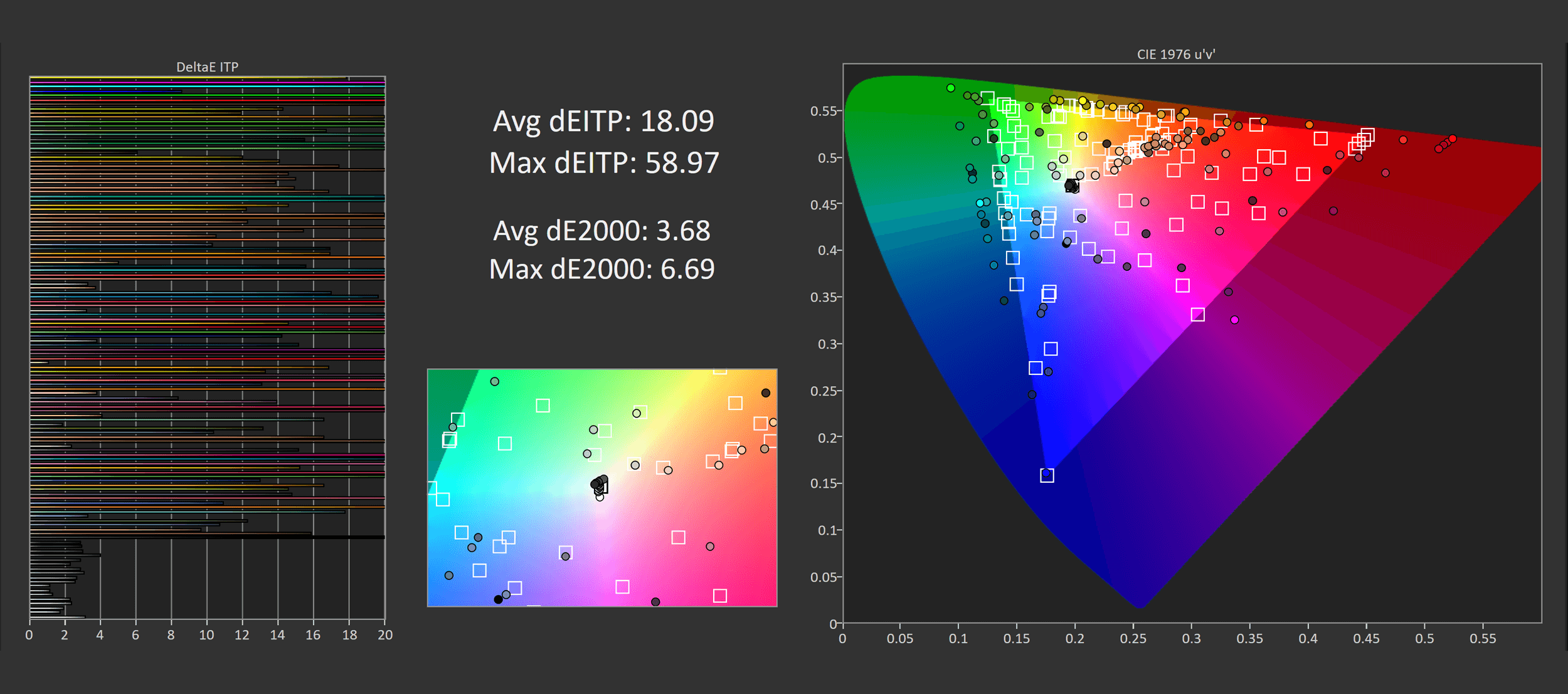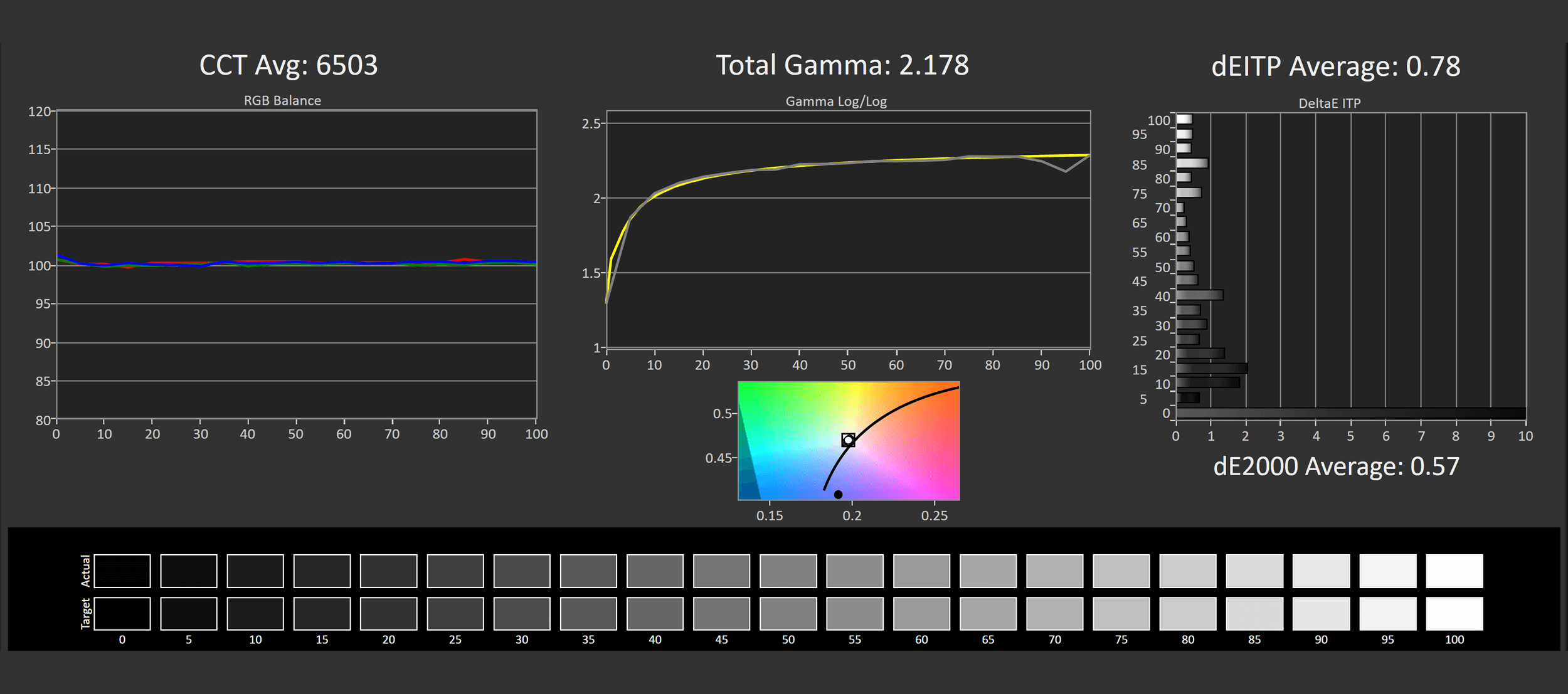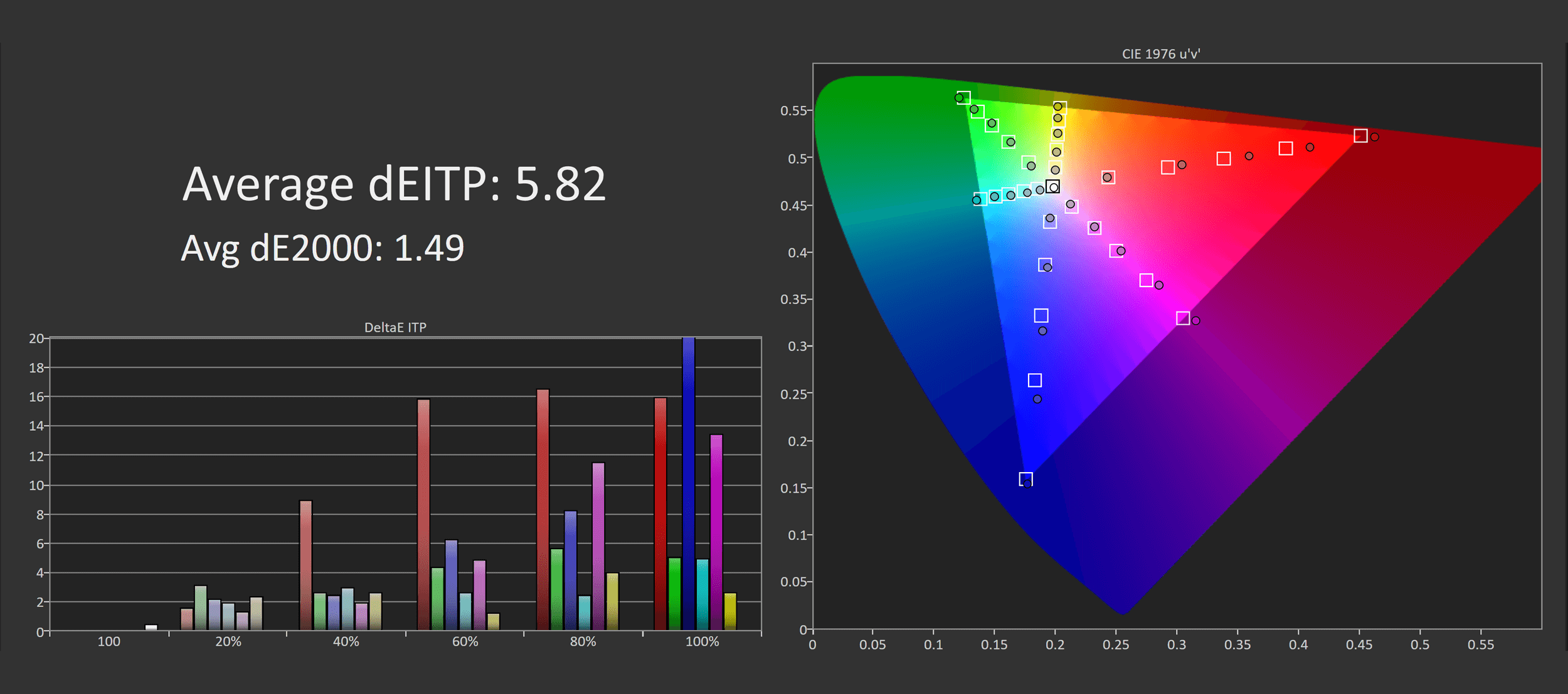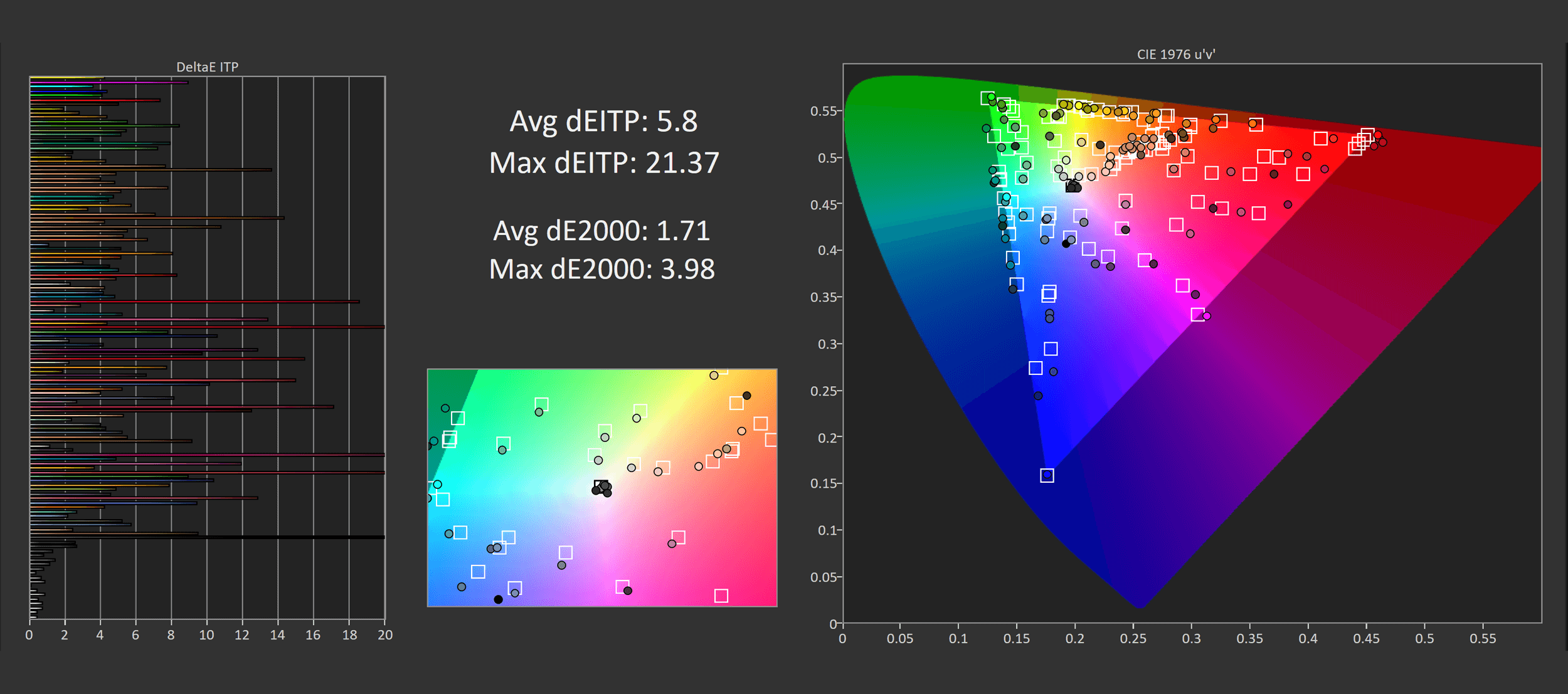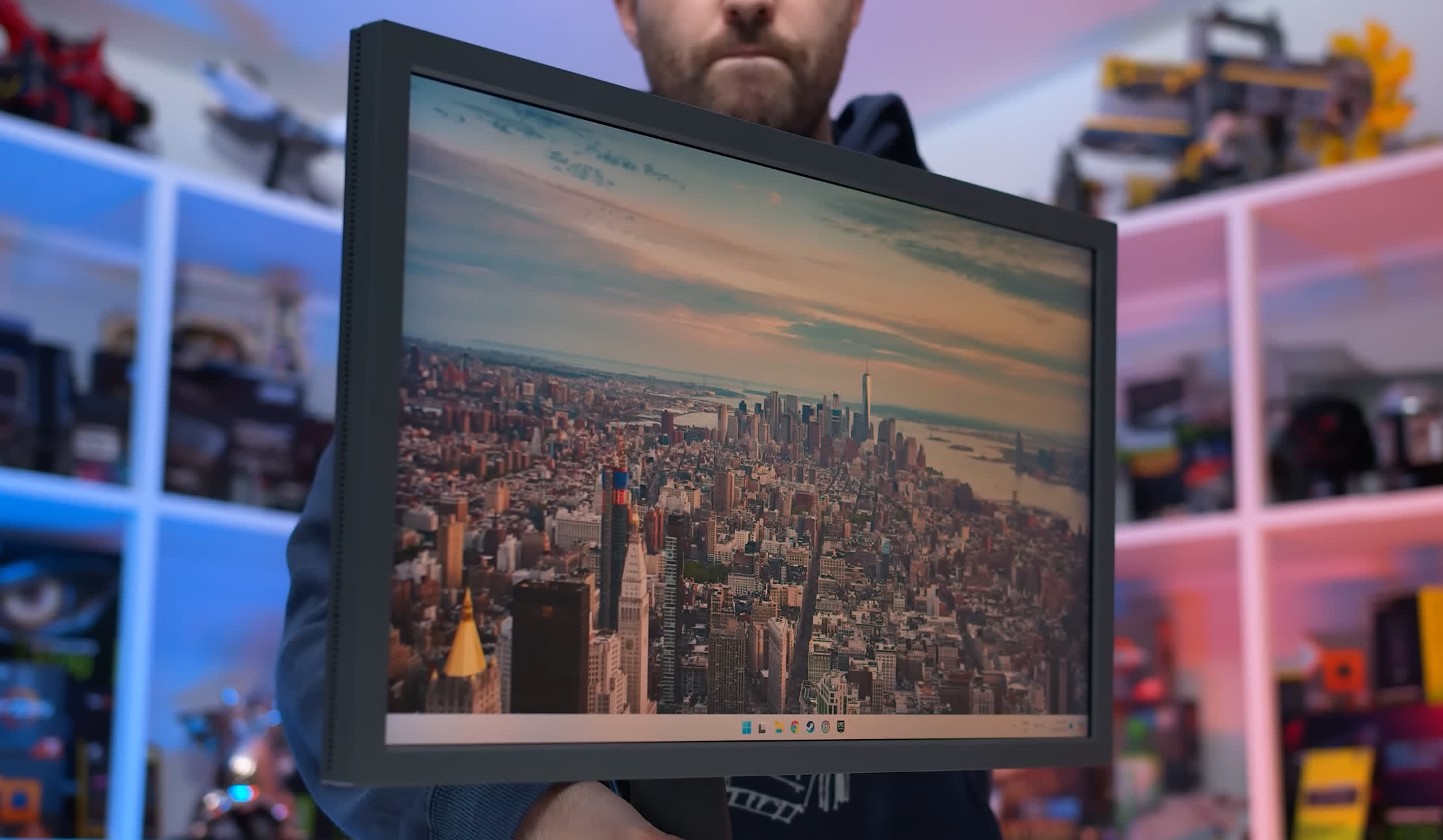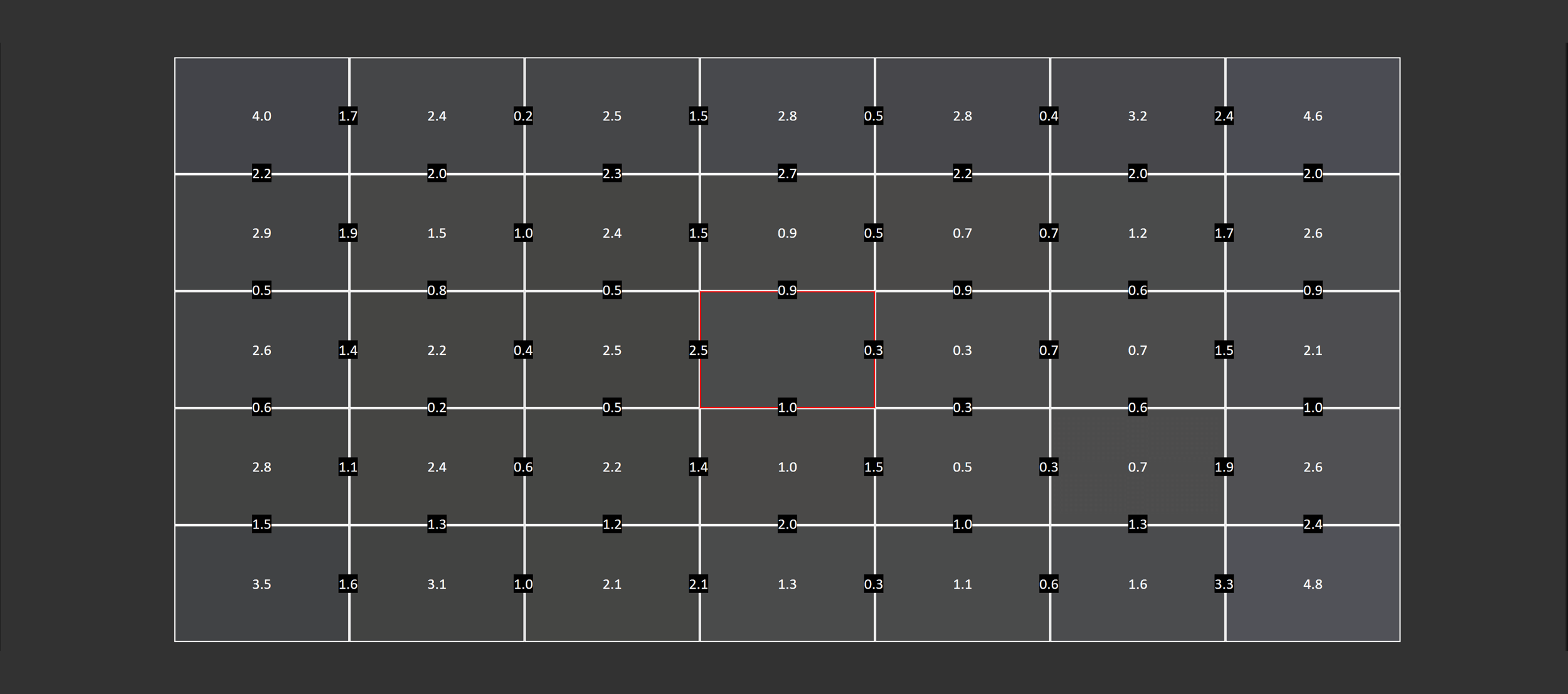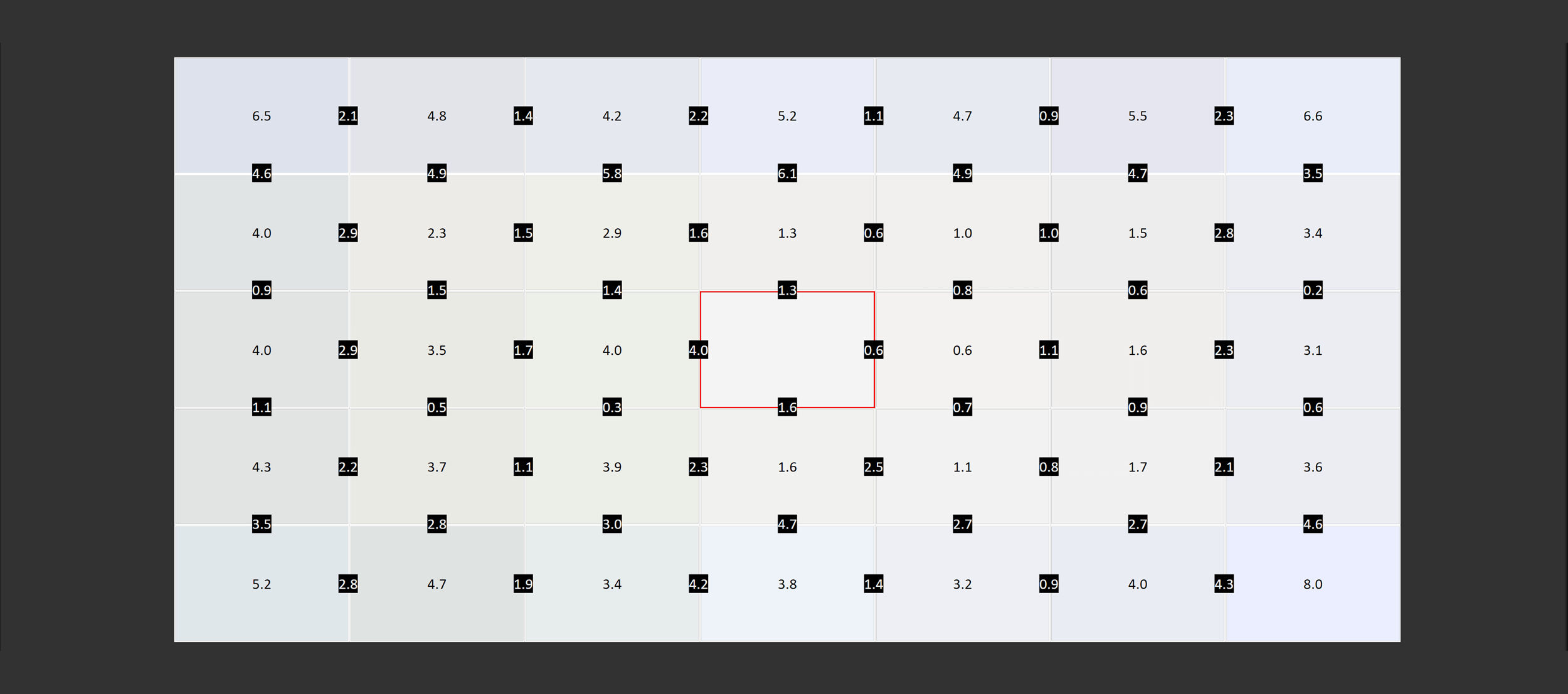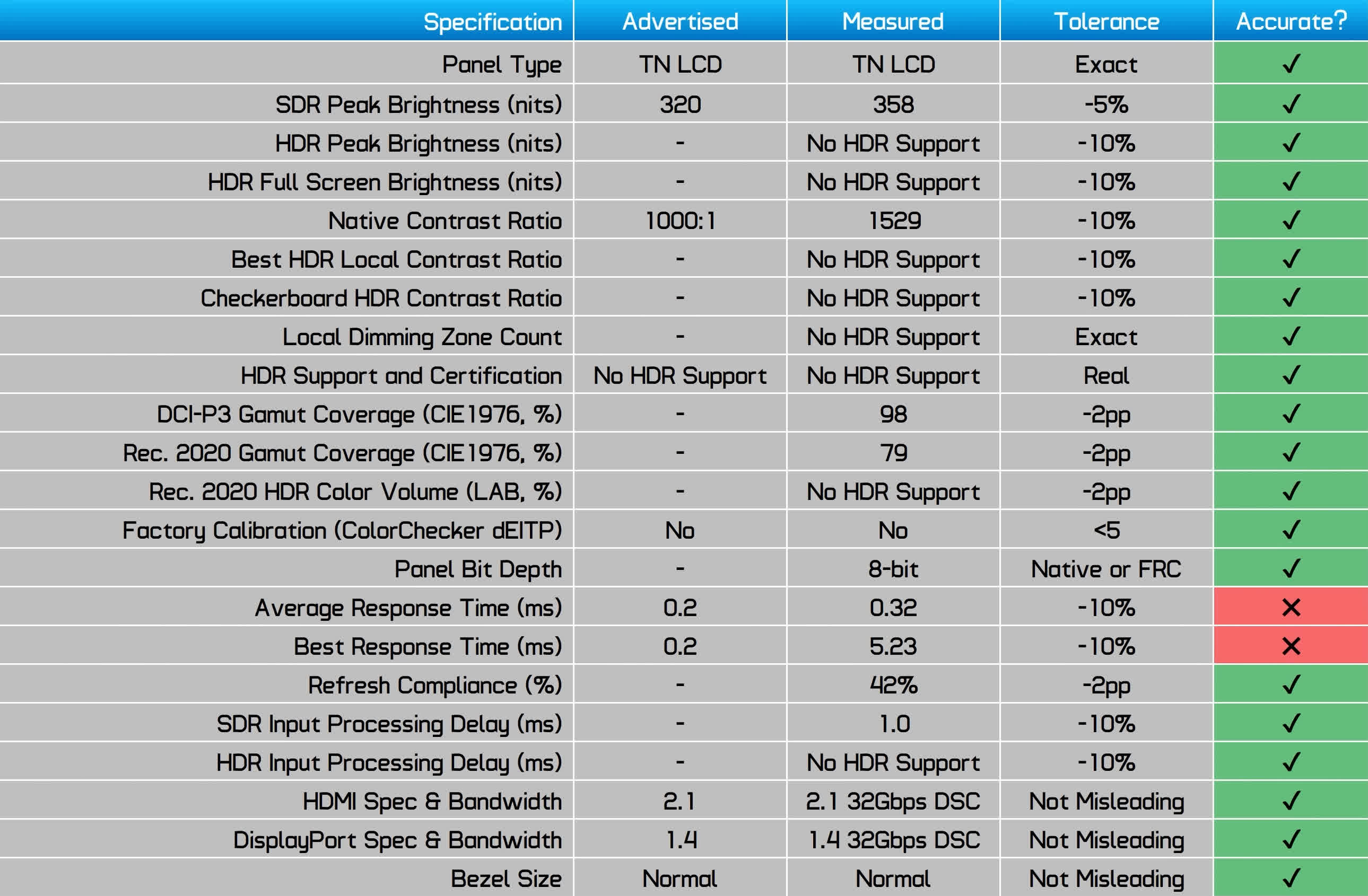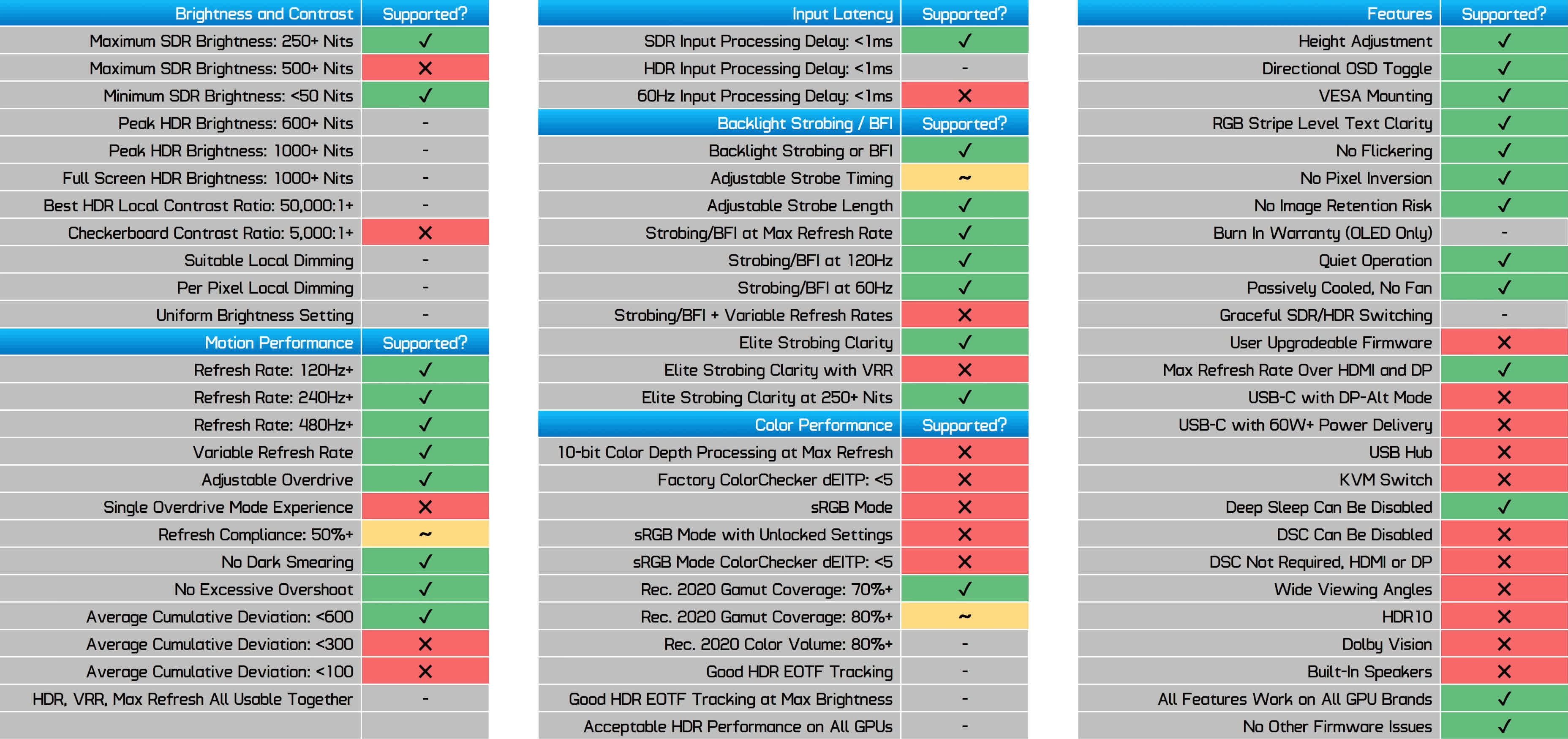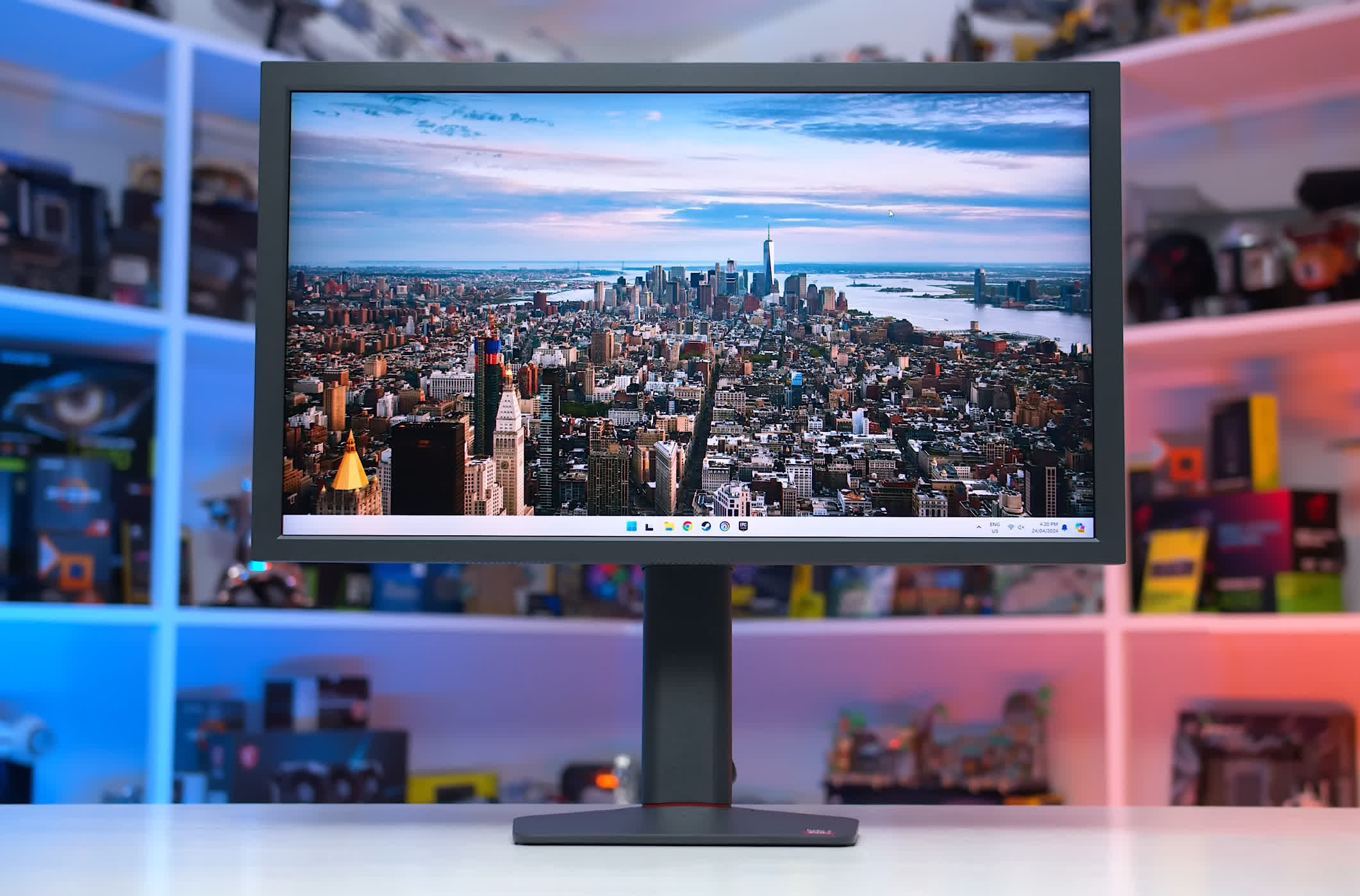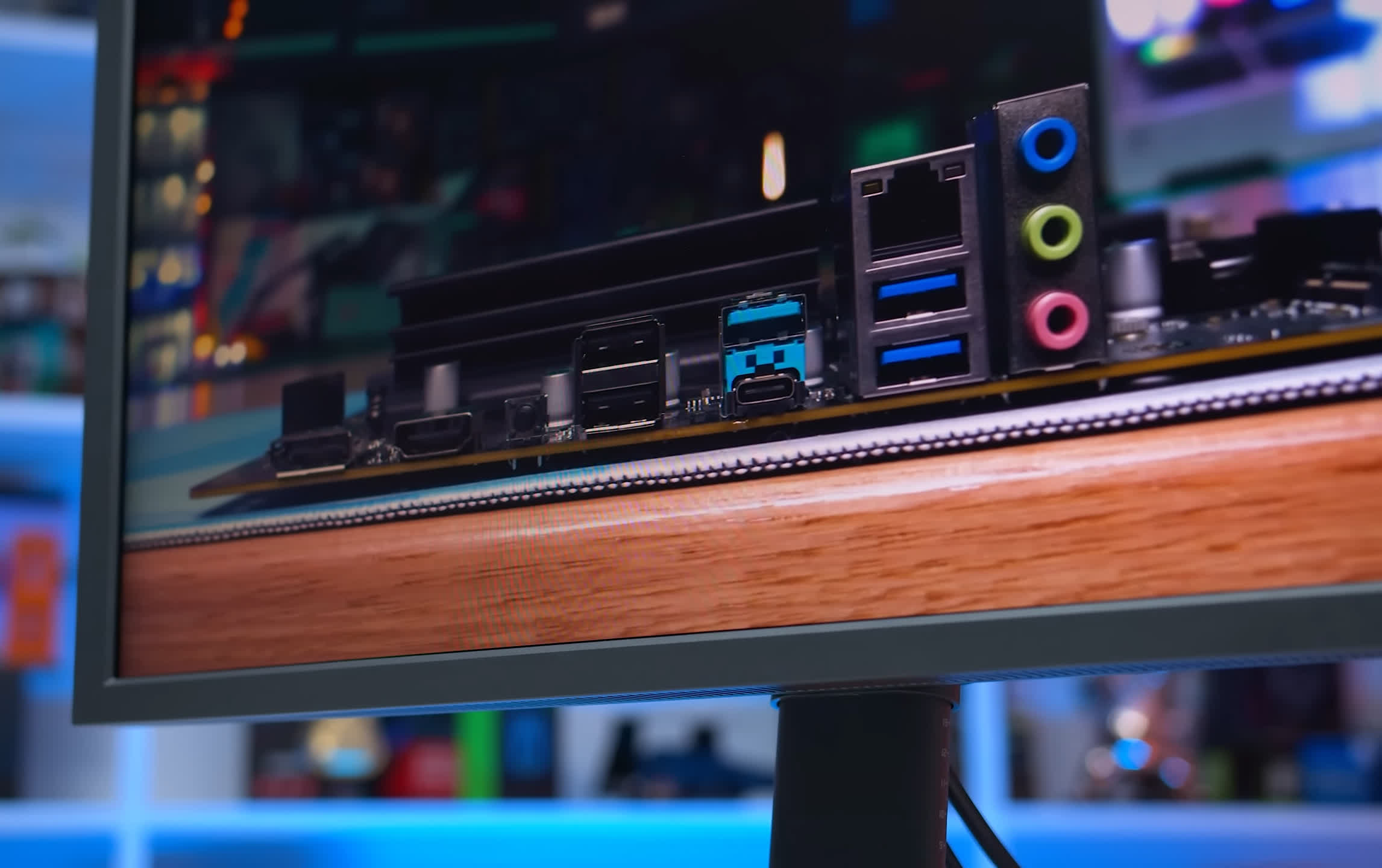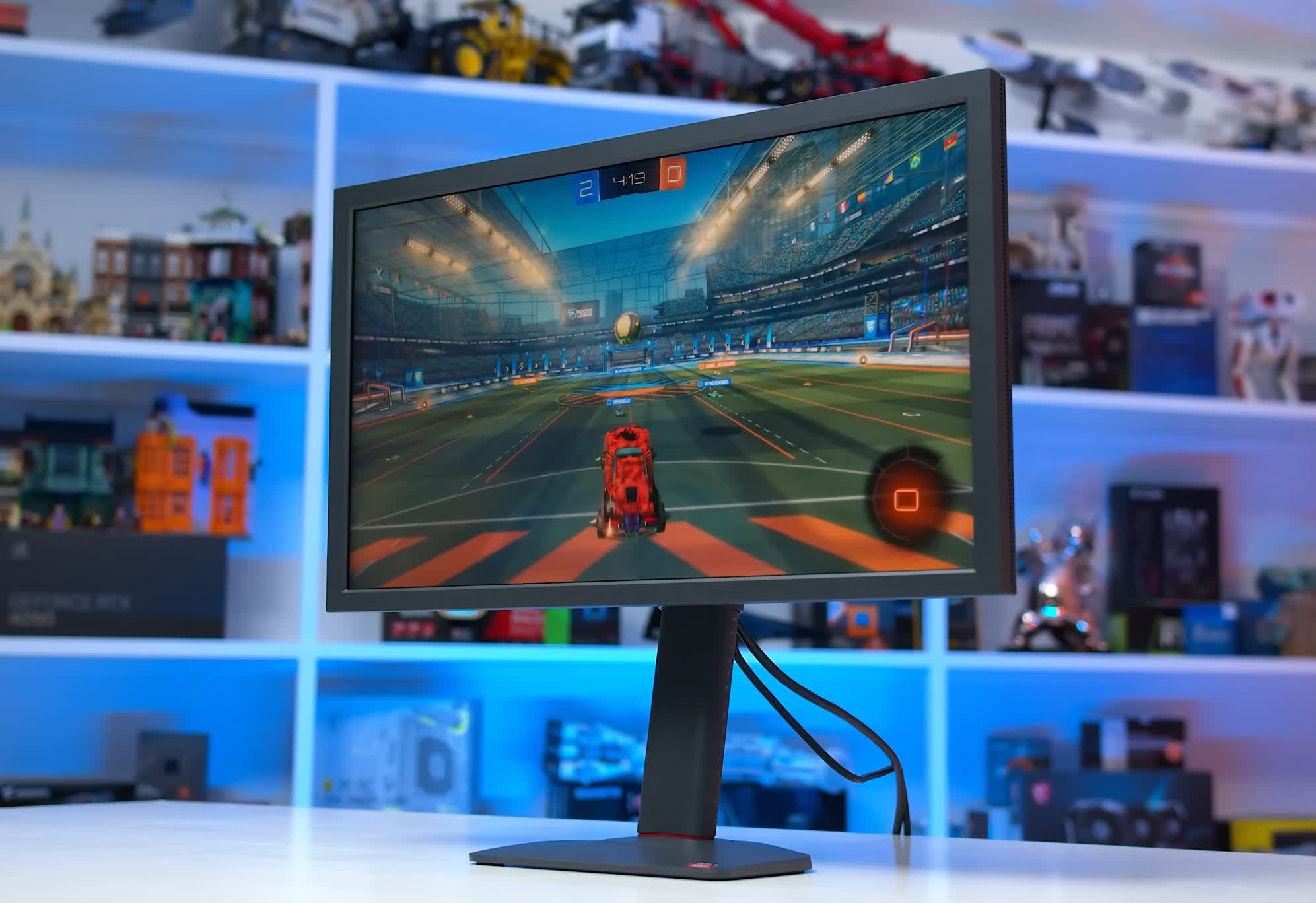Today we're taking a look at a brand new esports gaming monitor, the BenQ Zowie XL2586X. This beast packs a 540Hz refresh rate and is designed around a new version of BenQ's backlight strobing tech called DyAc 2. If you want the ultimate in motion clarity this could be the product for you.
Over the past year we've seen a lot of new high refresh rate monitor releases. On the OLED side we've seen 1440p 360Hz QD-OLED and LG's dual mode 32-inch WOLEDs that can run at 1080p 480Hz – but neither of them offer backlight strobing or BFI tech. There's also the Asus ROG Swift Pro PG248QP, which also features a 540Hz refresh rate, but uses ULMB2 to improve clarity. Later in this review you'll see some comparisons between all these products to see what comes out on top.
As a product tailored for competitive gaming, BenQ has opted for a 24-inch 1080p TN LCD panel, similar to many of their earlier models like the XL2566K (360Hz). Although TN technology has inherent image quality limitations, the hope is the motion clarity will be so good that you'll be willing to accept this trade off.
Features and Design
The design of this monitor is very simple and gives off the vibes that the product is more of a functional tool than a cool gaming monitor with a slick aesthetic. The bezel size is larger than what you'd typically see among other modern gaming monitors, but this appears to be a purposeful choice to separate your surrounds from the screen, helping you focus on gaming.
That's also why BenQ provides shades you can attach to either side of the screen, to prevent light hitting the display and block out even more of your field of view.
The stand is adjustable with height, tilt and swivel support, plus at the top of the stand pillar there's a cutout that helps you carry the monitor around, something you don't often see, but we guess is there for tournaments (?).
The base of the stand is small and again that's done with a purpose: smaller bases allow for a much greater range of mouse and keyboard placements, and we know that some pro-level players love to have their keyboard on an extreme angle which just doesn't work with some other designs.
The functional design extends to the port placement, which are directly on the back of the monitor for easy access. No USB hub here, but we do get three HDMI 2.1 ports and one DisplayPort 1.4 which even at 1080p requires DSC to hit 540Hz.
Unlike the competing Asus PG248QP you can actually achieve 540Hz over HDMI here because they are 32 Gbps ports, though like DisplayPort, DSC is required for full refresh rate performance.
The build quality consists of standard grey plastic with subtle red accents, such as the Zowie logo and a ring around the stand. While the materials aren't particularly luxurious, they are adequate for the intended audience.
Last time we looked at a 540Hz monitor there were a few interesting quirks, but these have largely been resolved. You'll still need to be running the latest version of Windows 11 to actually access 540Hz refresh rates, but those updates to support above 500Hz were rolled out in November last year, so it shouldn't be a problem.
Also, unlike the PG248QP that uses a G-Sync module, we didn't see any compatibility issues between Nvidia and AMD GPUs, both are fully supported up to 540Hz with adaptive sync functionality.
As for the benefits of the refresh rate itself, you'll see how it impacts motion clarity a bit later, but just using this monitor for desktop apps it's a massive step up for responsiveness and smoothness over most typical refresh rates of today.
Going from 144Hz to 540Hz is night and day, I know some people believe that anything above 144Hz is diminishing returns; we disagree...
Going from 144Hz to 540Hz is night and day, I know some people believe that anything above 144Hz is diminishing returns; we disagree, even for something as simple as browsing the web and navigating through Windows, 540Hz is significantly smoother and any action you take or input from your mouse feels near-instantaneous in a way that becomes crystal clear when returning back to the much slower world of 144Hz.
We also think it's quite a noticeable upgrade over 240Hz, the refresh rate is more than doubled, which leads to a corresponding improvement to latency. Obviously less of a gain than from 144Hz, but when comparing 540Hz to 240Hz we think the weaknesses in 240Hz become more apparent than when that refresh rate first debuted.
The only real way to describe it is that 240Hz feels slower to use than 540Hz – though it's probably not enough of a benefit to justify the astronomical price increase to access 540Hz.
The OSD is controlled through a directional toggle on the rear of the display and it includes BenQ's typical feature set. While there are functions like a black stabilizer, BenQ deliberately omits "cheat" features like crosshairs, so most of what you'll find are color and performance adjustment options. HDR functionality is not at all included, and there's no hardware to support it anyway.
Response Time Performance
The Zowie XL2586X comes with three overdrive modes plus full user customizability through a slider, so you can really dial in the best performance. The first mode is overdrive off which is actually not too bad for no overdrive, though clearly below the speed required for true 540Hz gaming.
The high and premium modes are quite similar. The high mode improves performance to 3.02ms with negligible overshoot and a cumulative deviation of 231. The premium mode bumps us up to 2.5ms with an 11% inverse ghosting rate and a similar cumulative deviation to the previous mode.
Despite generally performing really well, the speed on offer falls just short of what we're looking for in refresh compliance, largely due to this section of slow fall times and that's something I'll explore further in a moment. However we do hit 50% refresh compliance for 480Hz gaming which is still quite fast.
I did also experiment with the user modes and found that a setting of 20 is quite good for high refresh rate gaming. Around 540Hz it spits the middle between the premium and high built in modes, while also offering an optimal experience above 300Hz. Anything below 300Hz though and performance falls away, especially for overshoot.
If you are planning on using this monitor with a wider range of refresh rates using adaptive sync, then a setting of 10 gives the best experience.
While not overly fast at 540Hz, this level of overdrive does really well in the 240 to 100 Hz range to minimize overshoot while keeping speeds at an acceptable level. However without variable overdrive here, the XL2586X doesn't come with a single overdrive mode experience, so you'll have to tweak settings depending on whether you are playing mostly at high refresh rates or lower refresh rates.
Also you might have noticed that as the refresh rate lowers, fall time performance does suffer more and more, though not always with a huge impact on cumulative deviation. This is due to a weird bump in the fall time response, which has a bump length tied to response time.
Seems to be a byproduct of how the monitor is tuned and possibly related to the backlight, not sure on that one, but either way this sort of bump has a minor impact visually but does impact our response time numbers. At high refresh rates like 540Hz the impact of this artefact is negligible.
Response Time Comparisons
Compared to other monitors at their maximum refresh rate, the XL2586X is fast, slightly faster than the previous XL2566K with less overshoot at its best tuned mode. However it's not quite as fast as the Asus PG248QP, and being an LCD there's still a significant gap to today's high refresh rate OLEDs.
Honestly I was expecting more of an improvement comparing the new 540Hz model to the previous 360Hz TN from BenQ, I mean it's not a bad result given it's still right up there with the fastest LCDs that I've tested, it just didn't blow me away when it probably could have been equal to the Asus model.
On average across the refresh rate range, due to the aforementioned weirdness with fall time tuning, the XL2586X isn't that impressive when put up against our test methodology. You can tune it so it has minimal overshoot artefacts, but quite simply the Asus PG248QP is better.
And while the gap between these models is much lower in cumulative deviation, the Asus model is still offering around a 50% performance improvement which I suspect is largely due to variable overdrive – something the PG248QP has but the XL2586X lacks.
Ultimately BenQ's new 540Hz model performs identically to the 360Hz model on average, whereas I would have liked to see a step up in performance.
At lower fixed refresh rates like 120Hz the XL2586X really isn't well tuned for this type of gaming and is clearly designed to be used at the highest refresh rate. If you expect to mostly be utilizing refresh rates around 120Hz, the cheaper XL2566K is a much better choice, or get the better tuned Asus model.
Backlight Strobing and DyAc 2
The key selling point to BenQ's high end Zowie monitors is their DyAc backlight strobing technology, which has received a new version with this monitor, DyAc 2. Previous implementations of backlight strobing have strobed the entire backlight at once, which is effective but usually creates an optimal zone of clarity depending on the timing of the strobe.
Due to the scanout of the monitor row by row over time, there's usually parts of the strobed screen that aren't as clear, as there's a slight mismatch between when the monitor is transitioning that portion of the screen and when the global backlight strobe has occurred.
DyAc 2 aims to improve this by using a multi-zone edge lit backlight that allows for independent pulse control at different parts of the screen. When the top part is being scanned out and refreshed, the backlight will strobe at the top. When the middle scans out, the middle strobes. And so on throughout the display.
This has a noticeable benefit for motion clarity. The XL2586X has excellent strobing quality across the entirety of the display, including right at the top and right at the bottom. This is not the case with the Asus PG248QP, which has increased blurriness and strobe crosstalk outside the golden zone in the middle.
Of course, the middle of the screen still matters the most as that's where the action usually is, but it's nice to see that DyAc 2 is an evolution on the usual implementations we see and it has addressed one of the weaknesses I've seen countless times in the past.
As for comparing the general image quality of strobing across various monitors, the XL2586X at 540Hz does deliver a clearer image with less strobe crosstalk relative to the XL2566K at 360Hz. In both instances the text is readable, but the level of faint double images has been reduced which makes the image a bit less blurry and easier to parse. However compared to the Asus PG248QP it's pretty similar comparing best vs best image quality, the Asus model at times has slightly fewer artefacts.
There are a few other advantages in favor of the BenQ model. The best image clarity mode (DyAc 2 Premium) is brighter than the best ULMB 2 configurations with the PG248QP, reaching around 350 nits compared to 300 nits with the Asus model. Also, DyAc 2 is more widely compatible than ULMB 2 as it works with both Nvidia and AMD graphics cards, whereas ULMB 2 has issues with non-Nvidia GPUs.
As for comparisons with OLEDs, it's pretty easy for a backlight strobed LCD to outperform an OLED in clarity as most OLEDs don't support high quality black frame insertion, the OLED equivalent to strobing.
So for example, the 540Hz XL2586X with DyAc 2 looks better than the 360Hz QD-OLED 271QRX. Even the 480Hz mode of the 32GS95UE, which looks extremely impressive for non-strobed image quality, is that little bit blurrier than a strobed 540Hz LCD. So best versus best, premium esports LCDs are still ahead of OLED.
However there are lots of restrictions to gaming using backlight strobing. You need to sacrifice adaptive sync and HDR, and ensure your frame rate and refresh rate are perfectly matched. The XL2586X is a fast monitor but when not factoring in strobing – if you did want to play with adaptive sync enabled, and simply make use of the fast response times of this TN LCD – you'd probably be better off with a high refresh OLED instead. 360Hz QD-OLED gets very close in motion, and I'd have 480Hz ahead.
With that said if you're after the absolute best motion clarity you can get and are willing to run in the required configuration, OLED isn't quite there yet and these sorts of TN LCDs with excellent strobing modes do still have a place.
Input lag on this BenQ display is excellent with a processing delay of 1ms, in line with similar monitors like the PG248QP. With one of the highest refresh rates available in a monitor today, the combination of refresh lag and processing lag is low and great for competitive gaming.
The only real weakness here are response times being unable to match OLED, so there are times when a lower refresh rate OLED can appear faster. Competitive gamers should be mostly concerned with lag before response times, where only the absolute fastest OLEDs have a small, negligible advantage.
Power consumption is decent, though the new model does consume slightly more power than its predecessor. As it doesn't use a G-Sync module, the XL2586X uses about 20 percent less power than the Asus PG248QP. Generally though these monitors aren't designed for efficiency and more efficient products are available, typically IPS LCDs.
Color Performance
The focus of this sort of monitor isn't really color performance but let's work through this stuff quickly. First up the XL2586X is a wide gamut monitor with 98% DCI-P3 coverage and an impressive 79% coverage of Rec. 2020. Despite this it does not support HDR input at all (and shouldn't, as there's no true hardware capabilities), and it also doesn't feature an sRGB mode, though you can use Windows auto color management feature with this monitor.
Color Space: BenQ Zowie XL2586X - D65-P3
Default Color Performance
Out of the box BenQ specifically tunes their esports monitors for competitive gaming, and part of that means the use of a low gamma. Reducing the gamma of a monitor washes out colors, but also raises shadows, so while generally the monitor looks pretty crap for any sort of image viewing or video watching, it is easier to spot enemies with this sort of setup, which is why BenQ does it. You'll also see oversaturation due to the wider than sRGB color gamut.
Standard Mode Color Performance
What was a little disappointing to discover is that there are no other built in modes that are even close to color accurate, so if you did want to get this monitor looking nicer for (say) watching a YouTube video, it's a bit of a pain. The standard mode gets the closest, but even then it retains a poor gamma.
OSD Tweaked Color Performance
Calibrated Color Performance
After a lot of stuffing around with various settings I was able to solve greyscale performance and get it looking nice, but without any sort of sRGB clamping ability there's little that can be done to fix oversaturation.
A full software calibration can help here, but the results weren't quite as good as we usually see as the XL2586X is starting from a worse initial position which can throw up challenges for calibration. Any way you look at it though, this isn't a monitor that's designed to produce a stunning image, it's all about whether you can play games to an elite level or not.
Brightness, Contrast, Uniformity
Peak brightness reaches 358 nits here, the same as BenQ's previous model, and this is the case whether you are or aren't using DyAc 2. Minimum brightness of 40 nits is acceptable.
As for the contrast ratio it's actually not too bad here from a TN LCD at 1529:1, somewhat higher than the Asus model and a large improvement over the XL2566K.
This doesn't exactly give the monitor rich black levels, especially due to viewing angle concerns, but it's not the worst when viewing it in the right position.
Speaking of viewing angles, the XL2586X is atrocious in this area. You'll need to be viewing the display in the absolute dead center to get a nice experience with any deviation leading to huge gamma shift, a washed out image and impacted color quality and contrast.
This is the main reason why most LCDs have moved away from TN technology, because IPS in particular is significantly better and more usable. With that said this BenQ isn't an outlier as far as TN LCDs go, all of them have terrible viewing angles. I also wasn't overly impressed with uniformity, which is mediocre at least with my unit.
HUB Essentials Checklist
BenQ does a generally great job of advertising this monitor, especially as they don't advertise HDR support, which works in their favor as this display does not have the right hardware for it. The response time claims of 0.2ms are pushing it a bit, though outside of this the minimal specs they do provide are usually exceeded.
As for the feature support matrix, several elements relating to HDR were not assessed as BenQ are not claiming HDR support here. Based on what you're seeing here this is clearly a niche use case product as many features that would be nice to have on a versatile monitor are not included. I'm thinking about decent color calibration, wide viewing angles, USB hub, those sorts of things. Thanks to DyAc 2 though, it does perform well in the backlight strobing section, and generally does okay in motion performance.
There are a few borderline results though. Refresh compliance doesn't quite reach 50% due to weird response behavior, and Rec.2020 gamut coverage falls just short of 80%. DyAc 2 doesn't provide the ability to adjust strobe timing from within the monitor, but this doesn't appear necessary due to how it functions. Also, while 60Hz strobing is supported, it looks awful and I wouldn't recommend using it. Outside of this it was nice to see low input lag and LCD benefits like no burn in risk.
Who Is It For?
The BenQ Zowie XL2586X is an interesting monitor to look at purely from a technical perspective. It's nice to see what the absolute fastest TN LCD panels are capable of today, and BenQ's newer DyAc 2 tech does appear to be a step forward for backlight strobing, addressing some issues we've had before.
But, this is a very niche product that will only appeal to a tiny portion of the monitor market. For the vast majority of gamers, it's very difficult to recommend buying this over many other products available today.
We almost see the XL2586X as a tool rather than as a consumer product.
We almost see the XL2586X as a tool rather than as a consumer product. It's designed for serious, competitive esports gamers and professionals, basically every aspect to this product is tailored to that user and its feature set is highly targeted. If you'd like a tool that will potentially help you to perform better at esports games – through a high refresh rate, excellent DyAc 2 motion clarity, and low input lag – then you've come to the right place. This will be exactly what you're after.
For most gamers this is not a product that you should consider though.
Yes, it's fast, but it has poor color quality, awful viewing angles, a low resolution and a small size. There's no HDR functionality, out of the box color tuning is washed out on purpose (to assist with viewing enemies in competitive games), and the design is all about function over form.
On top of all this, the price is a major roadblock. BenQ charges an astronomical $1,000 for the Zowie XL2586X, which is completely ridiculous for what you get, even for those after its niche benefits. Most gamers that want to spend that much on a gaming monitor would be much better off with a 1440p 360Hz QD-OLED – which are also cheaper – as they're far more versatile and better at pretty much everything except strobed image quality.
And we say this even if you have a focus on competitive gaming: if those are the sorts of games you prefer but you're not a hardcore, serious, tournament-winning level player, you probably don't need what this BenQ monitor is offering and will be better off with a high-end QD-OLED (or something else).
We don't even think the price makes sense compared to other strobe-focused LCD gaming monitors. The Asus ROG PG248QP was near impossible to recommend at $900 when we reviewed it last year, and somehow this BenQ offering is even more expensive?
We actually think the Asus is better in many respects, aside from some very specific aspects to how the strobing is implemented. The Zowie brand is very well known among high performance monitor fans, but in this instance it seems BenQ are trying to leverage that brand to push a very high price when it isn't justified.
In our opinion, this monitor should be replacing the XL2566K at the same $600 price point, offering an improvement from 360Hz to 540Hz and an upgrade in DyAc tech. That's the absolute most we would consider paying and even then it feels like it's a lot.

